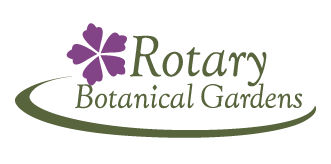Enriching lives through beauty, education, and the arts.
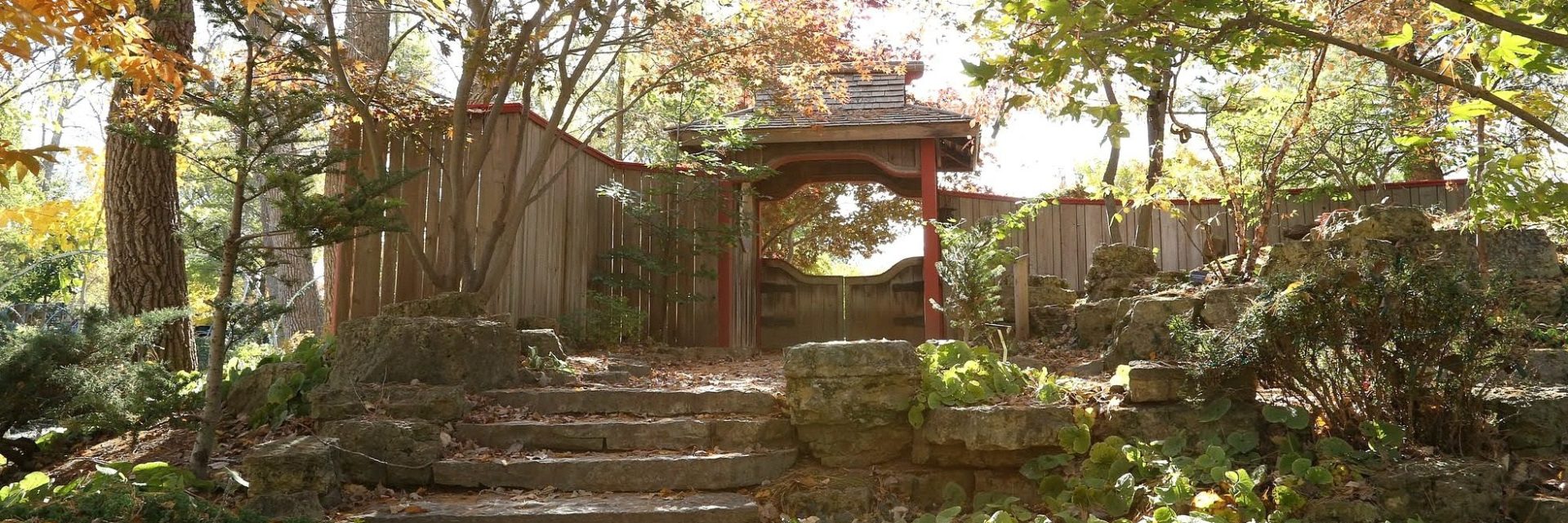
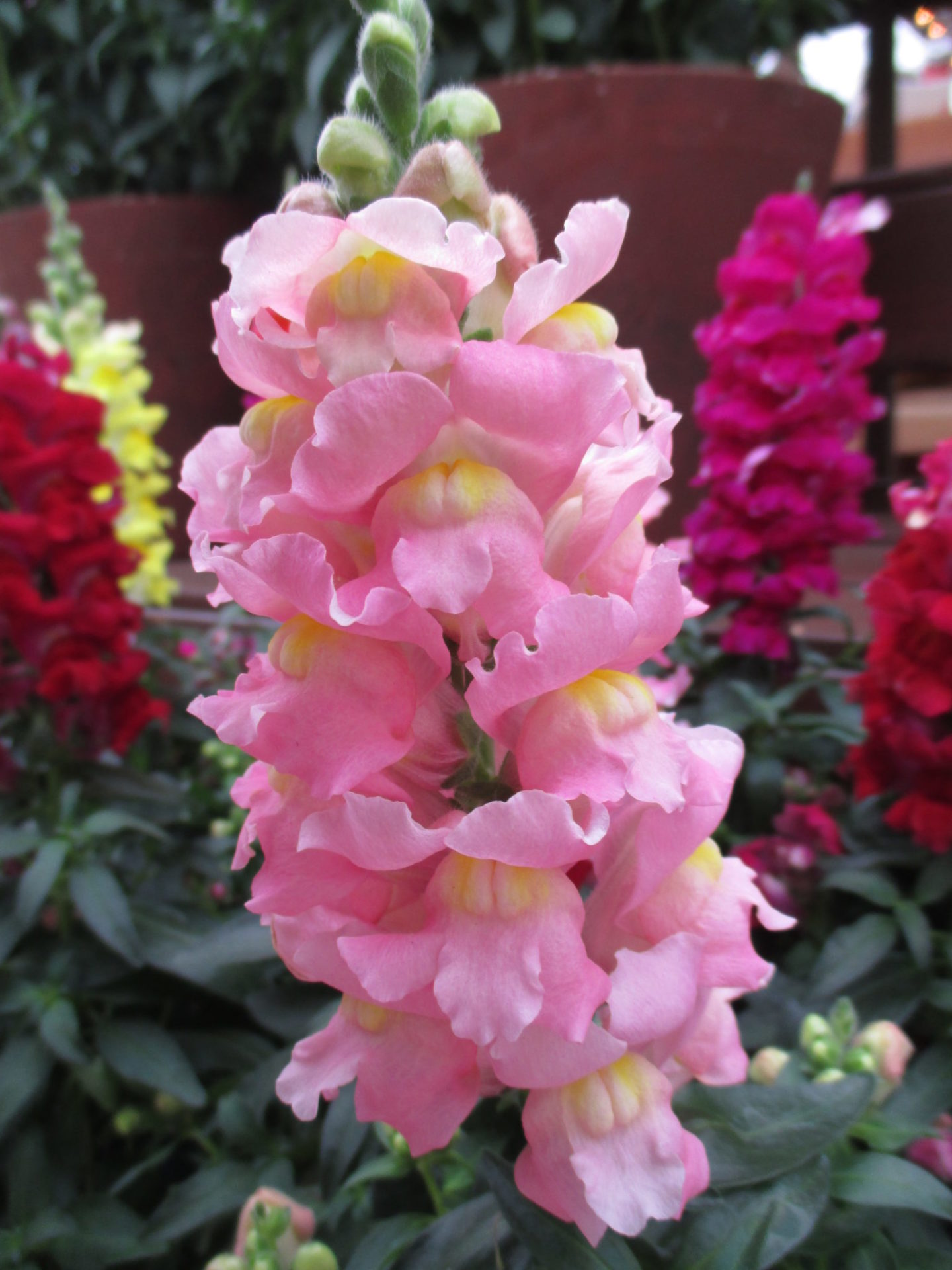
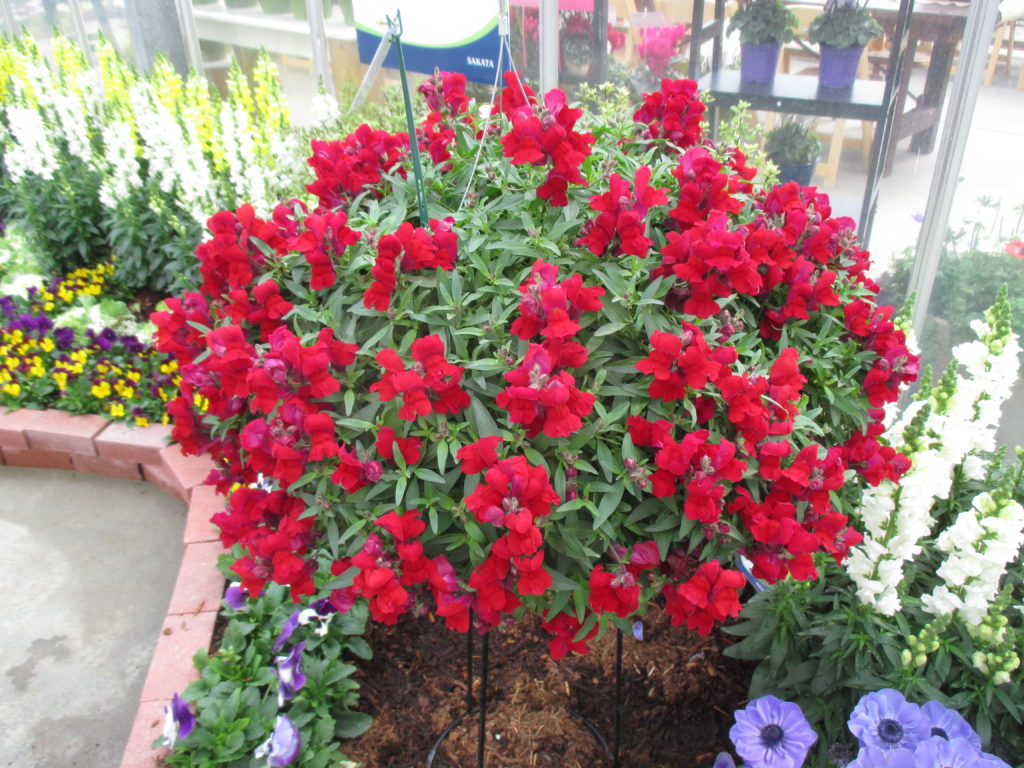
Spring continues to get closer as we note longer days and these occasional warming periods. As our earliest of bulbs poke out of the ground and the April garden emerges quickly, it’s a great time to consider the merit of snapdragons (Antirrhinum sp.) in the landscape. Originally native to Southern Europe and the Mediterranean, snapdragons have been spread far and wide and were brought to North America by early colonists. Carl Linnaeus gave snapdragons the genus Antirrhinum in 1753. The Latin roughly translates to “snout like”….As a child, I remember making these flowers open and close! Thomas Jefferson grew snapdragons at Monticello and snapdragons were an extremely popular cut flower in the 1950s. Named the “Flower of the Year” in 1994 by the National Gardening Bureau, there are now over 200 varieties available with more offered each year. Snapdragons are offered as seed in many cases with some being vegetatively propagated. The varieties featured in this blog are relatively new and were all photographed in 2016. With heights ranging from 6″ to almost 4′ in height, there is also a wide range of colors (no blue) and bi-colors. it has been exciting to see recent breeding that has created trailing forms (like Candy Showers™ Red seen directly above and below) as well as double forms classified as “butterfly-type” or “azalea-type” selections. Snapdragons bloom from the bottom of the flower upwards with flower stalks extending for a long period of time. Snapdragons are ideal in both spring and fall in our climate as they thrive in the cooler portions of the year and can tolerate cold evening temperatures. Called a “cool season” annual, snapdragons thrive in the May-June time period and late September until hard frost. Some varieties have more heat tolerance but once air temperatures reach 80 degrees F, snapdragons slow down their blooming. Consider cutting them back and keeping them happy until cooler weather arrives or focus on heat tolerant selections. The ‘Rocket’ series is exceptional for height and heat tolerance. Snapdragons will also attract a wide range of pollinators including hummingbirds! These photos barely scratch the surface of what is available….so consider putting some “snap” in your landscape this year!
We had a very productive day at the gardens with work occurring both inside and outside. Larry H., Dennis, Alan and Vicky were all outside collecting lights from the Holiday Light Show (HLS). The HLS is probably about 50% collected although weather may become a factor in the coming weeks (likely!). Ron P. continues to work on repairs which is time well spent before we pack lights away for the season. Urban was outside pruning this afternoon. Kathy worked on some indoor projects while Peg continued working on our plant records with a focus on updating our information on tree memorials. Marv, Bob K., Ron Y., Vern, Jim D., and Dave T. all continued working on a wide range of indoor projects. Dr. Gredler did some painting and both Dick H. and Bill O. had myriad tasks. We also saw Larry O., Gary, Maury (errands), Polly, Maryam, Del, Barb C. and many others today.
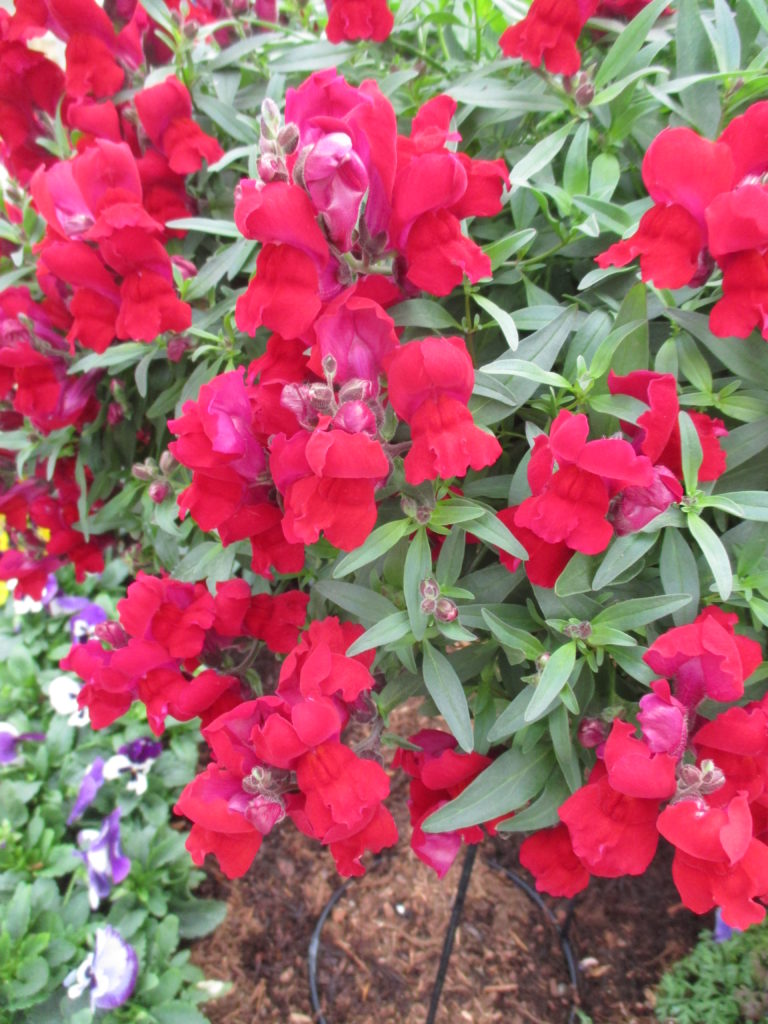
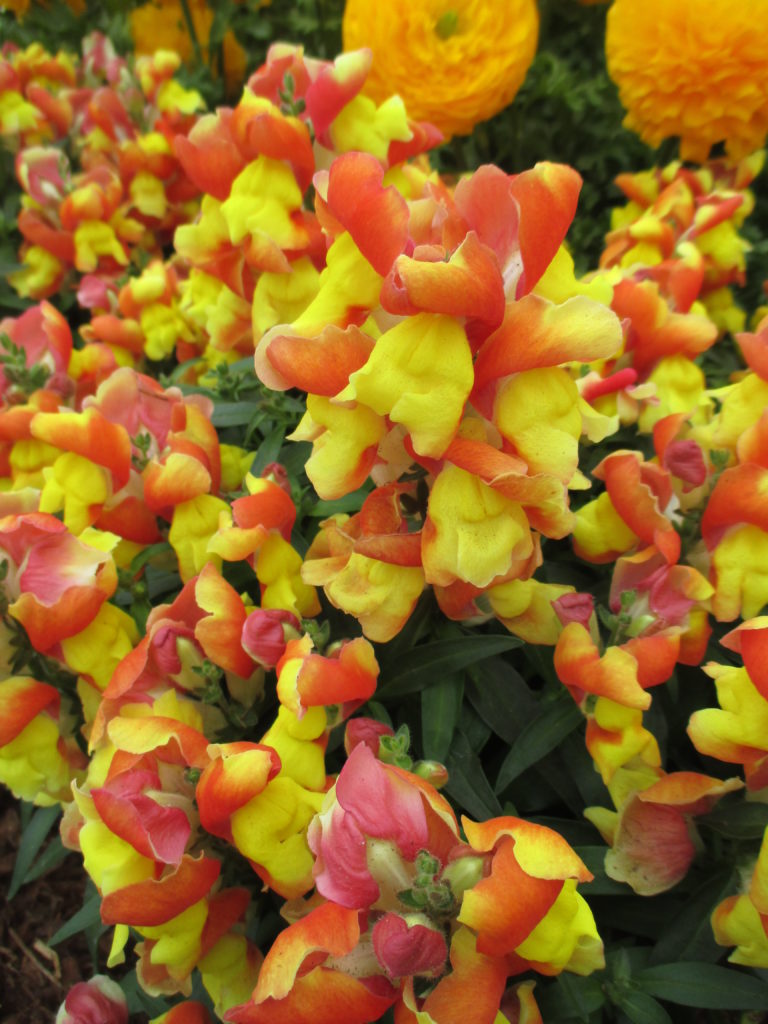
‘Floral Showers Apricot Bicolor’
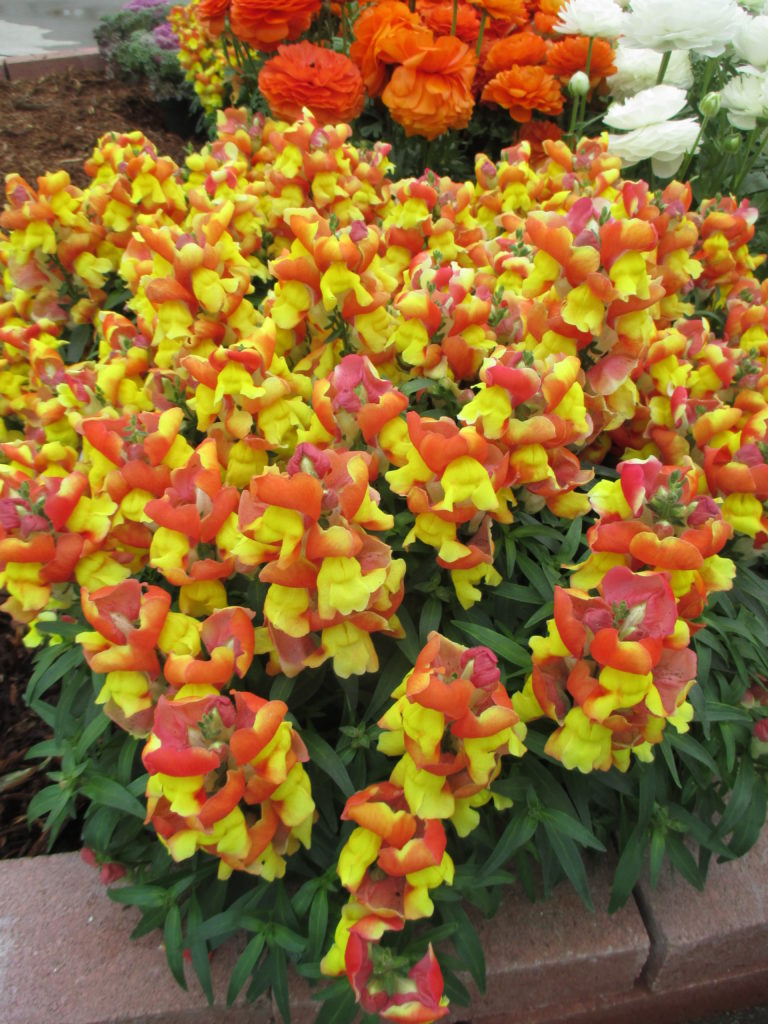
‘Floral Showers Apricot Bicolor’
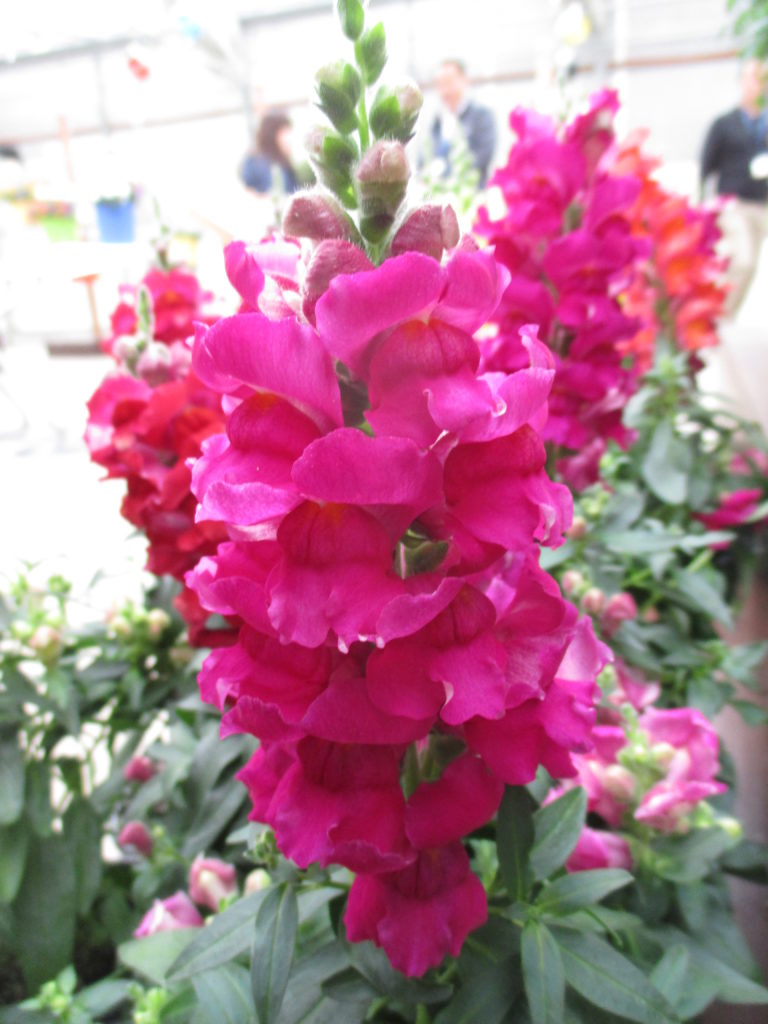
Snaptastic™ Magenta
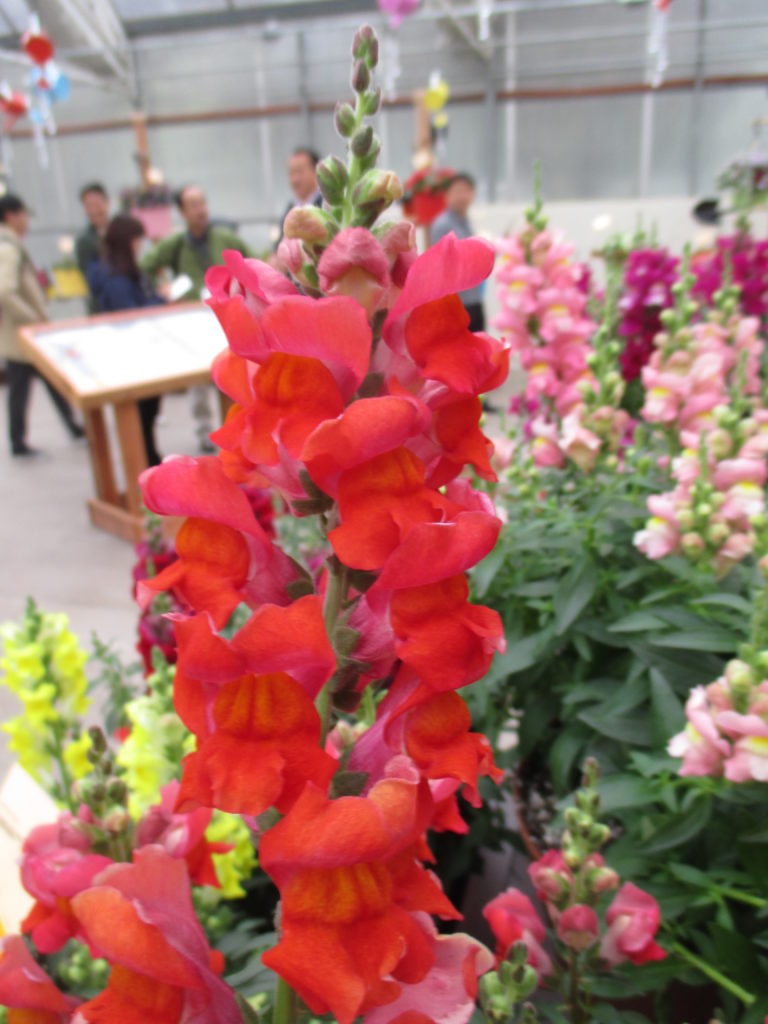
Snaptastic™ Orange Flame
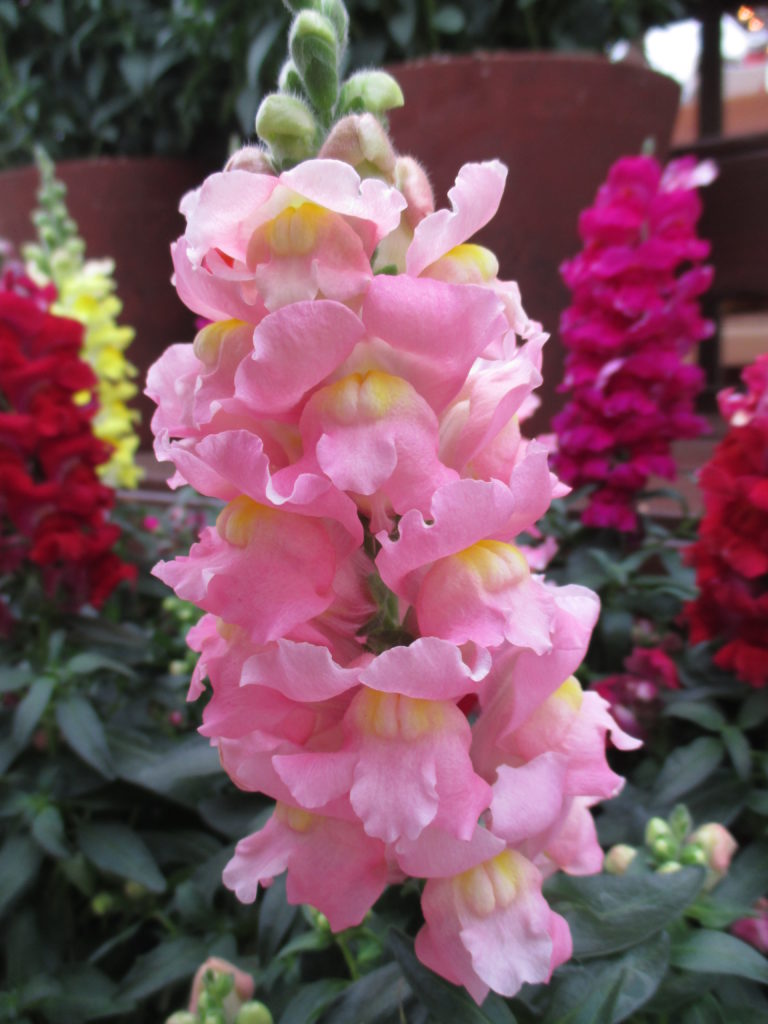
Snaptastic™ Pink
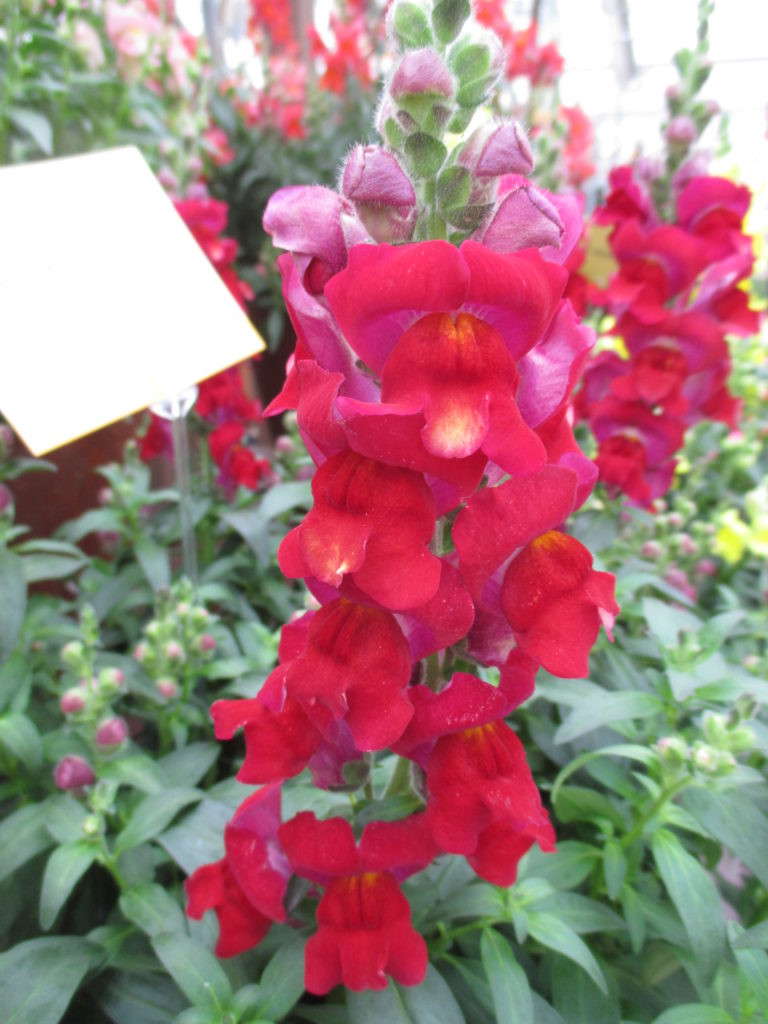
Snaptastic™ Red
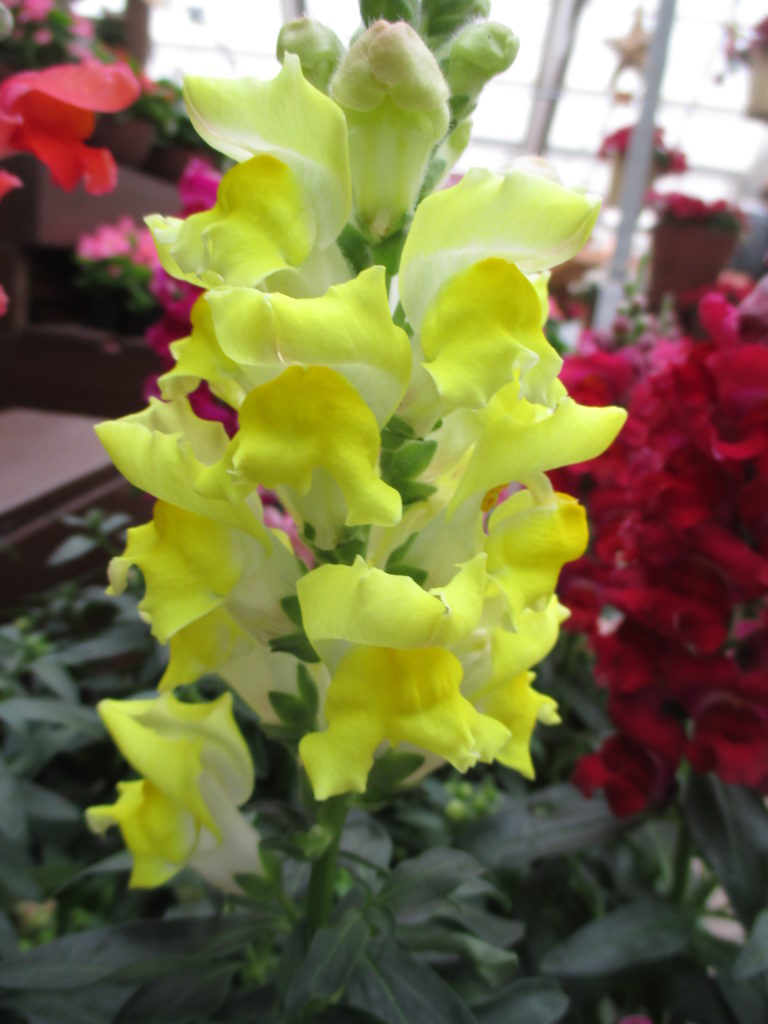
Snaptastic™ Yellow
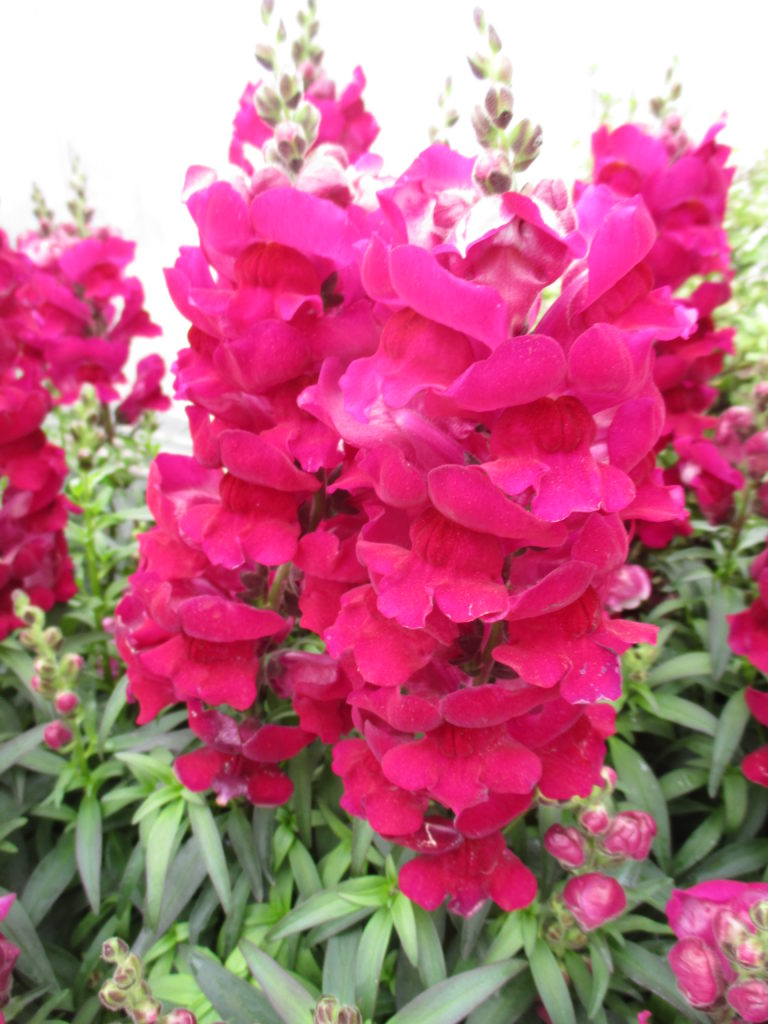
‘Sonnet Burgundy’
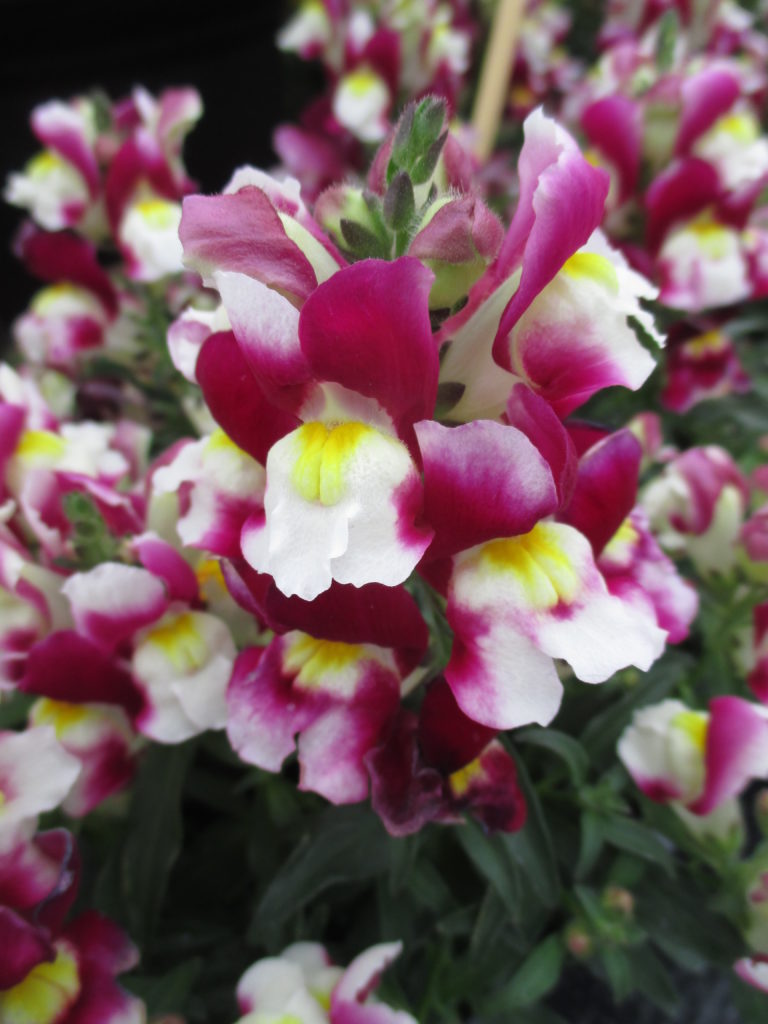
‘Snappy Burgundy & White’
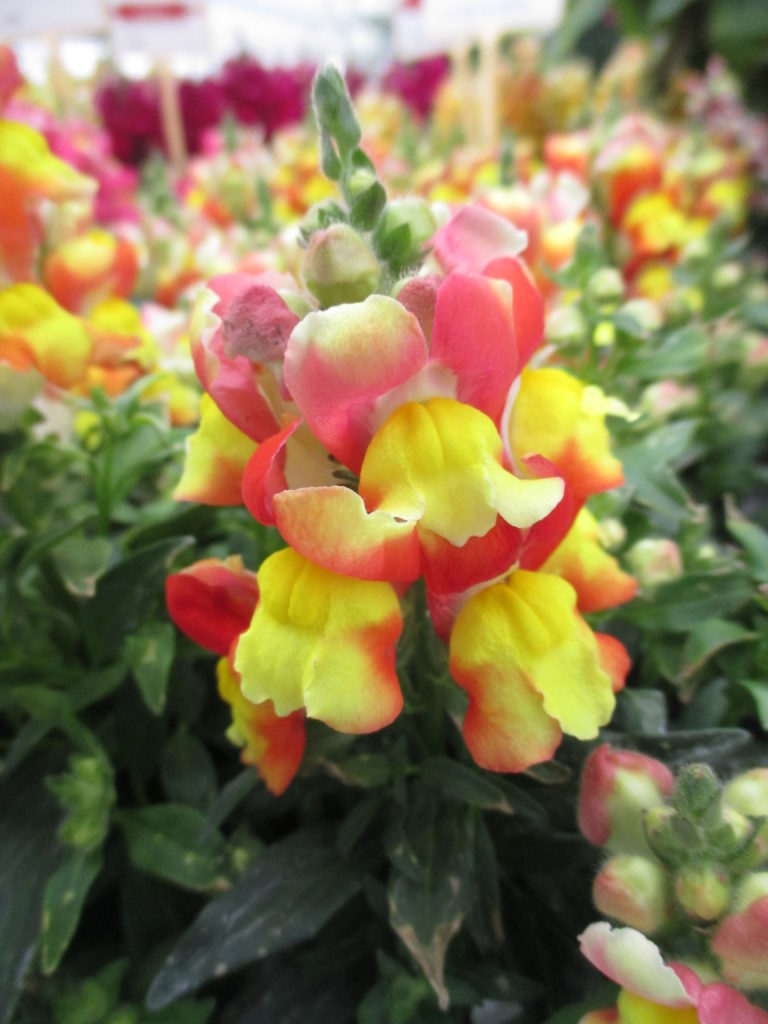
‘Snappy Orange & Yellow’
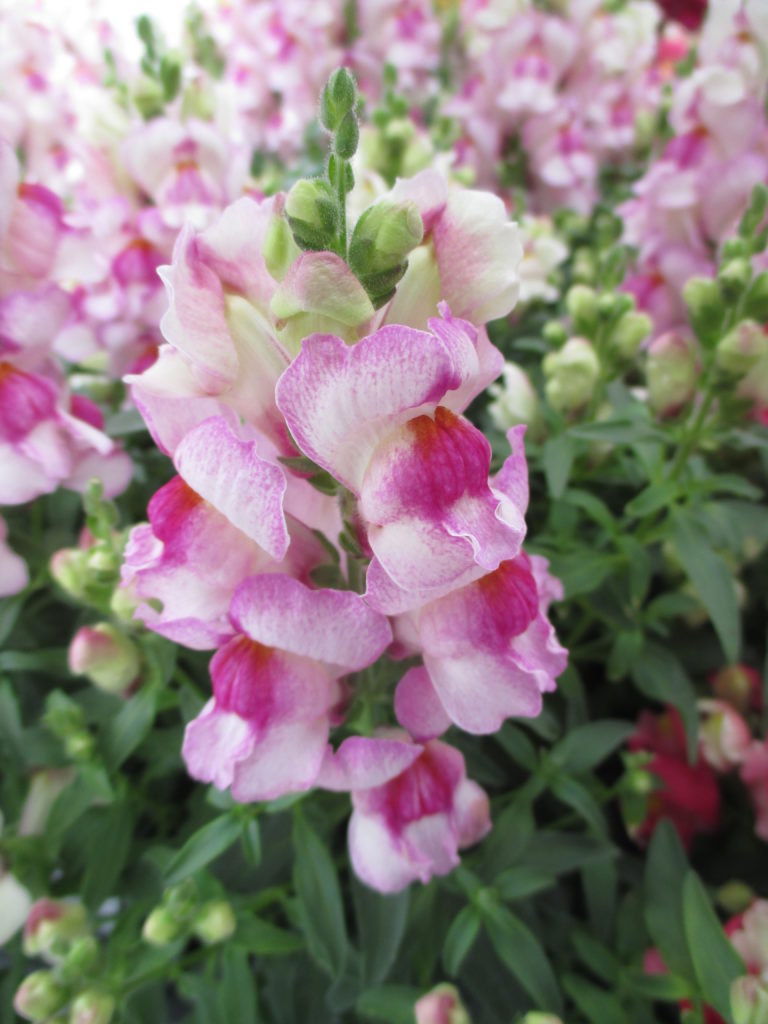
‘Snappy Orchid’
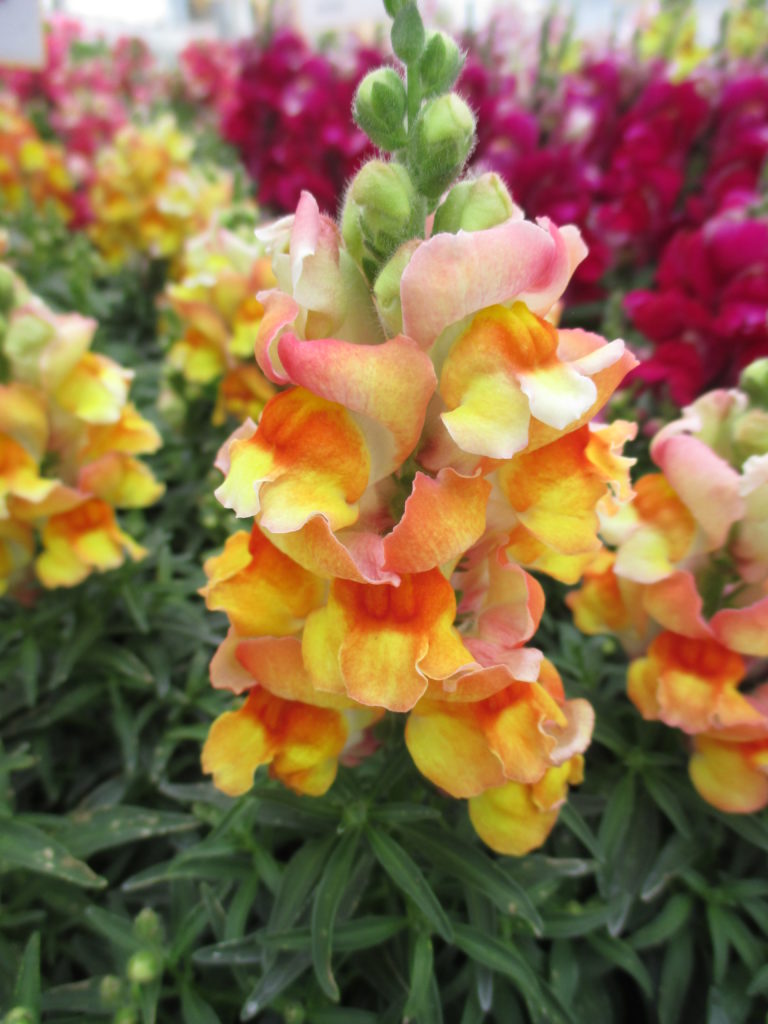
‘Snappy Peach Flame’
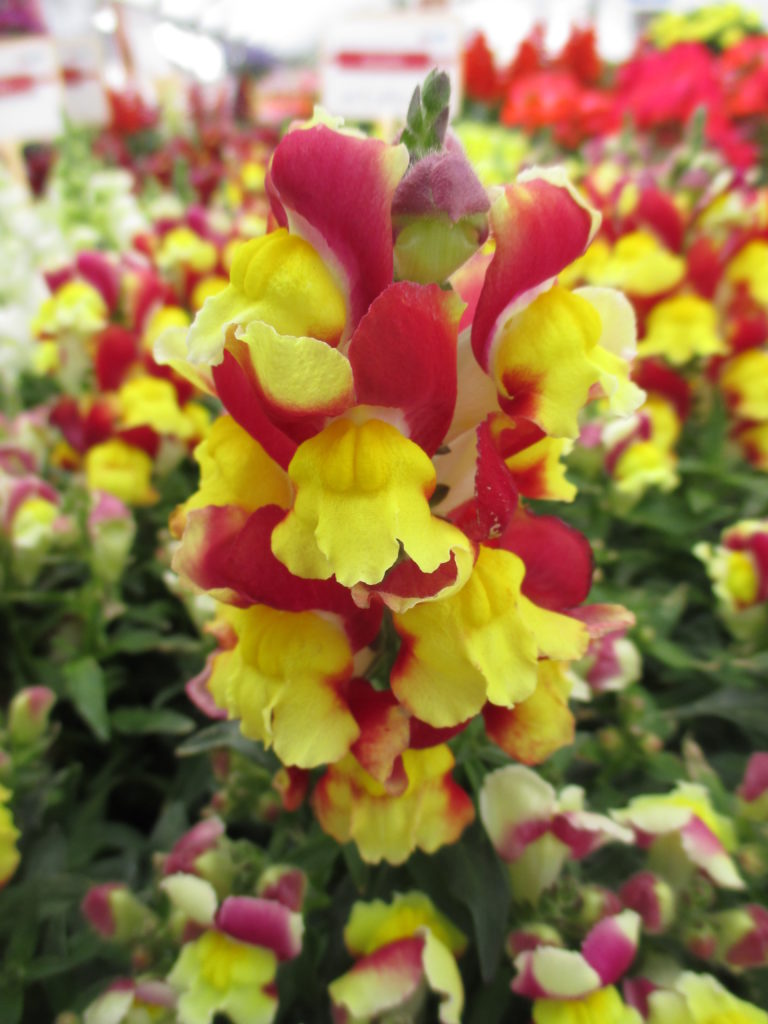
‘Snappy Red & Yellow’
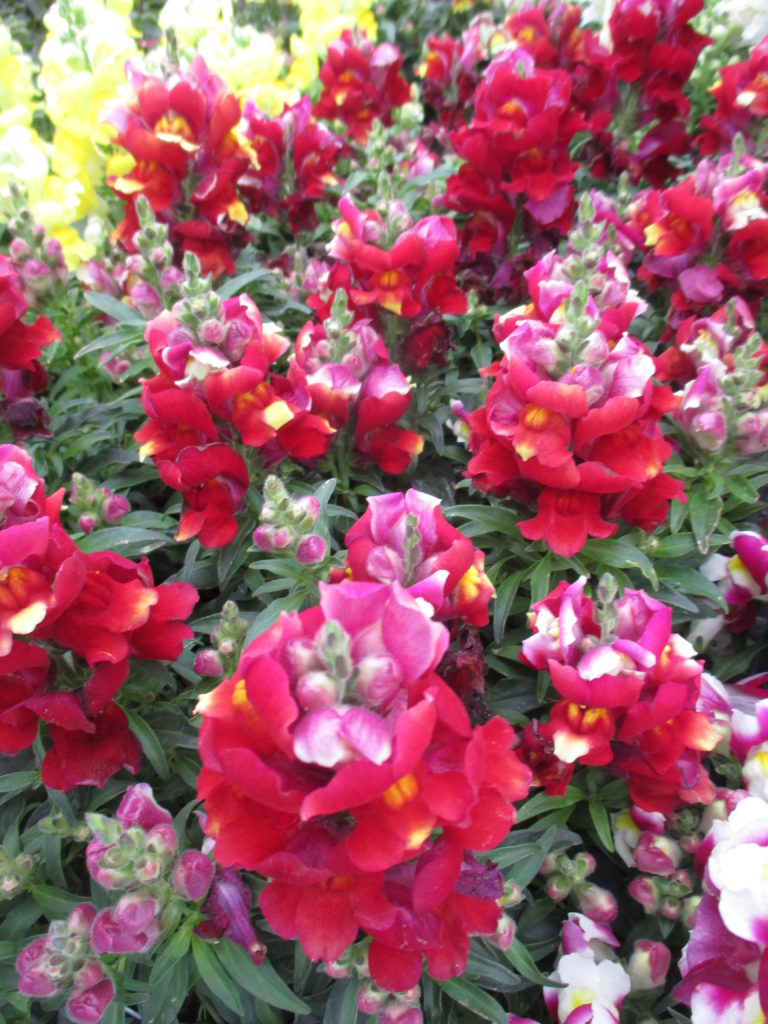
‘Snappy Red’
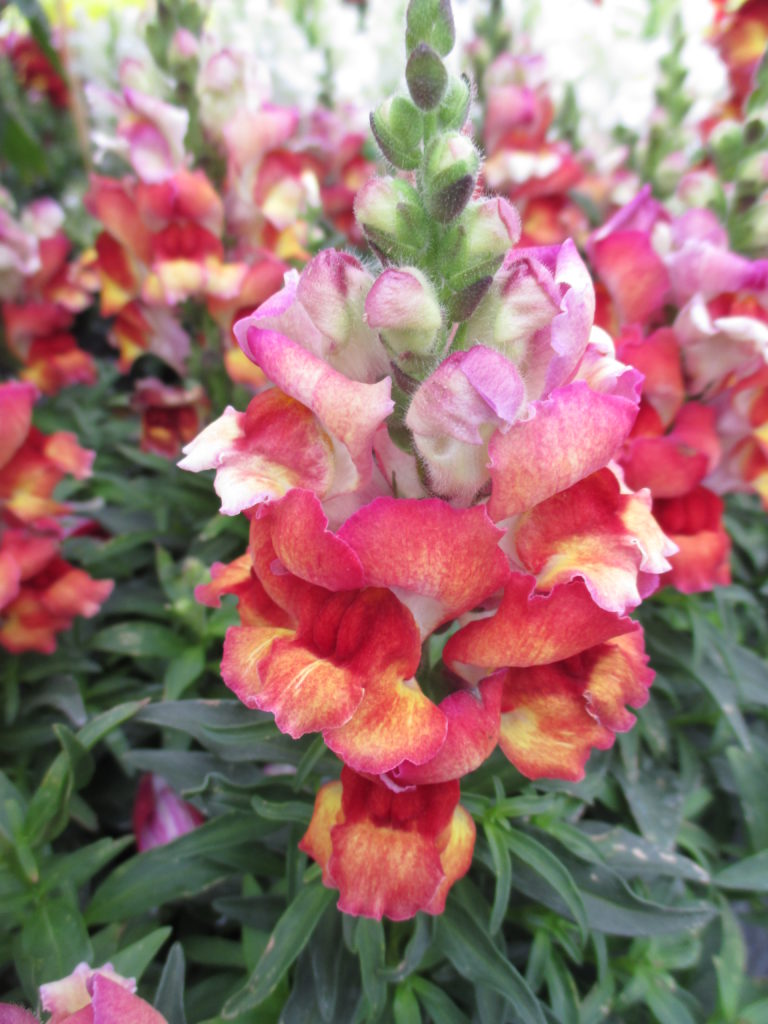
‘Snappy Red Flame’
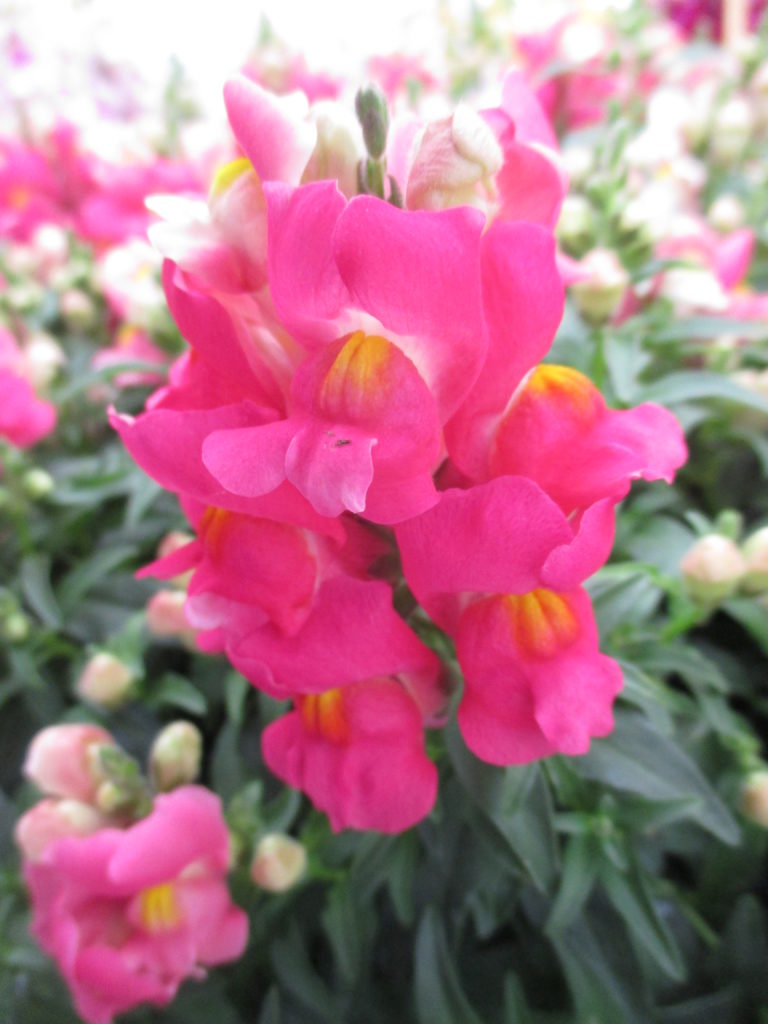
‘Snappy Rose’
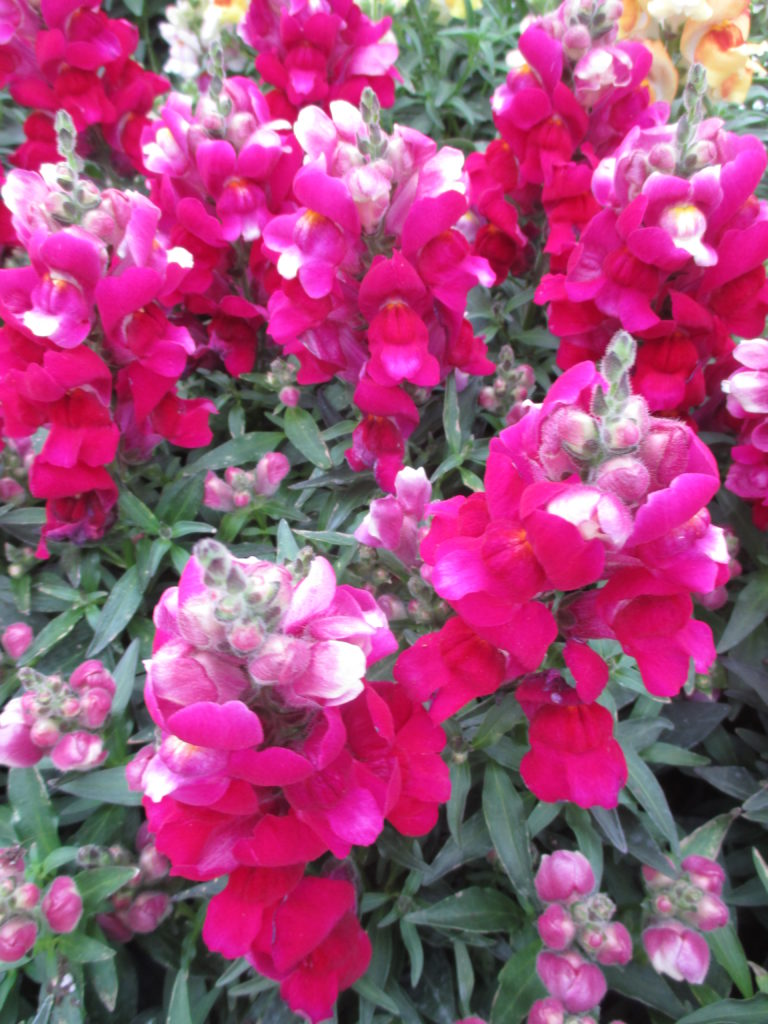
‘Snappy Violet’
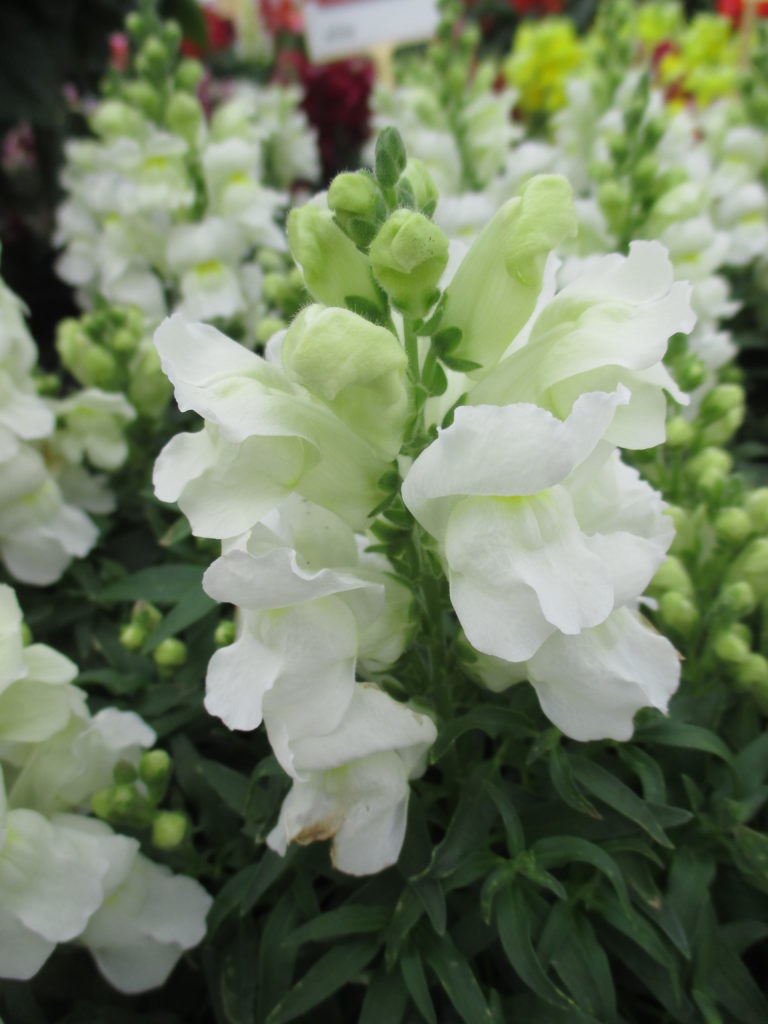
‘Snappy White’
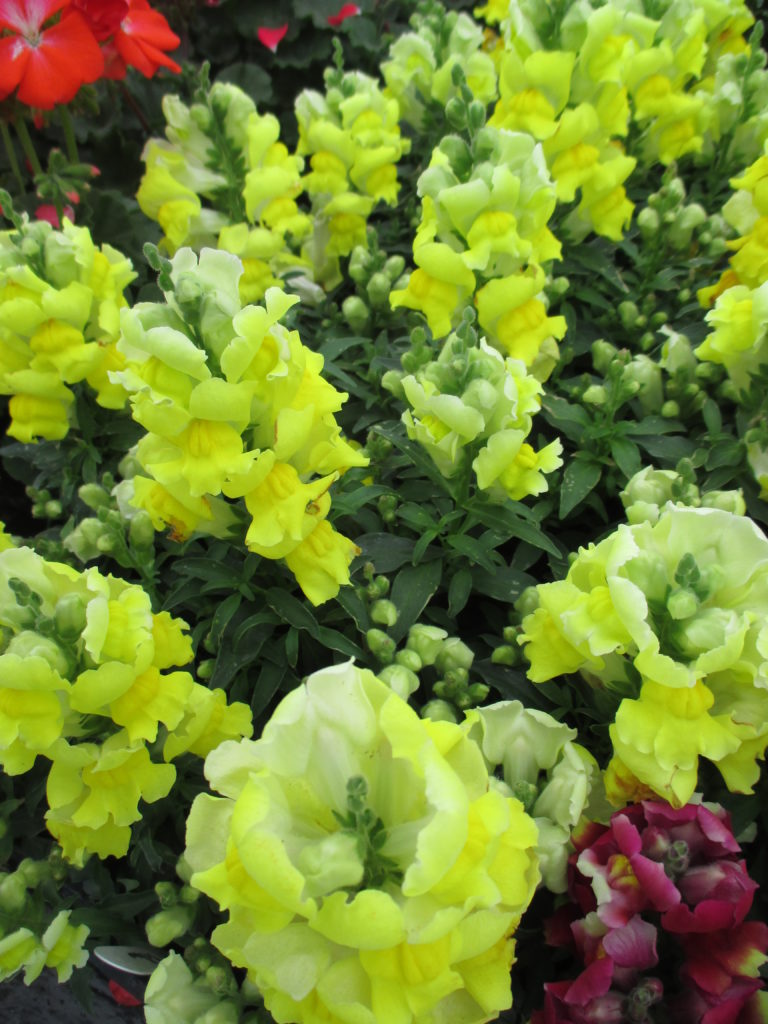
‘Snappy Yellow’
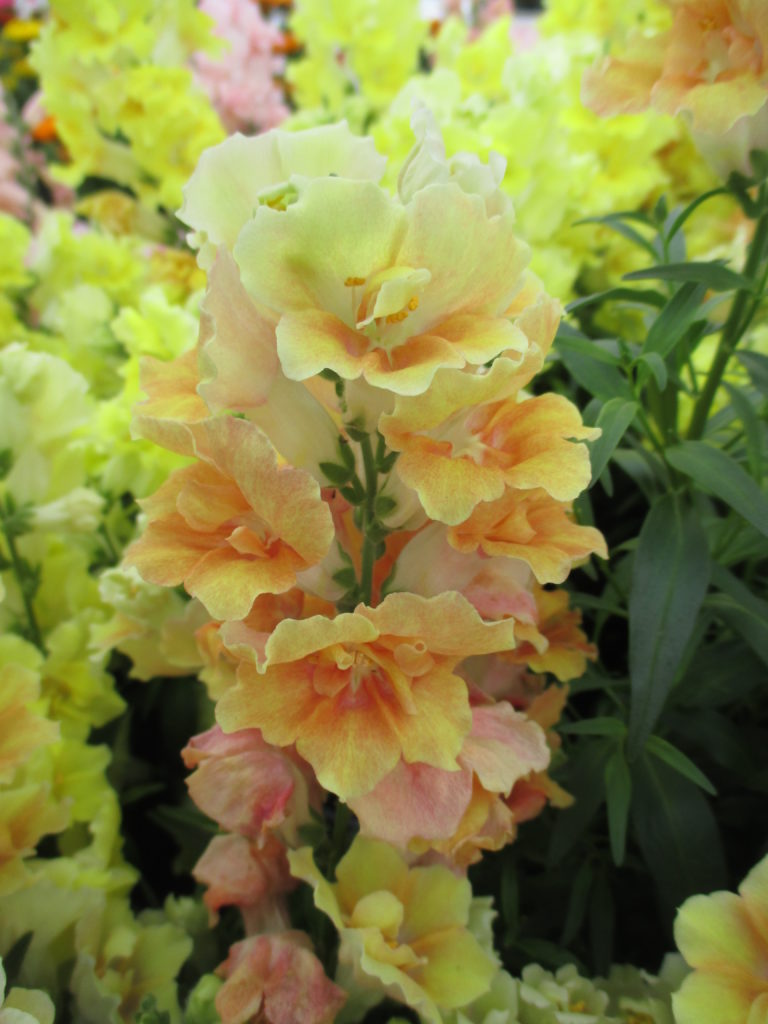
Twinny™ Peach
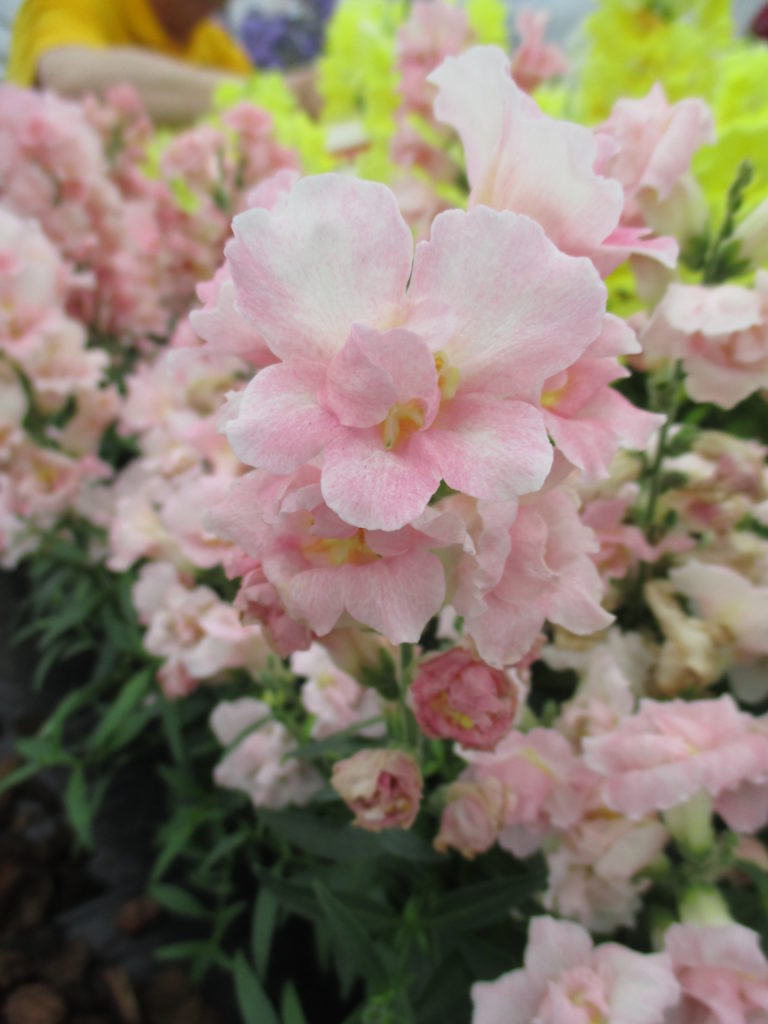
Twinny™ Rose
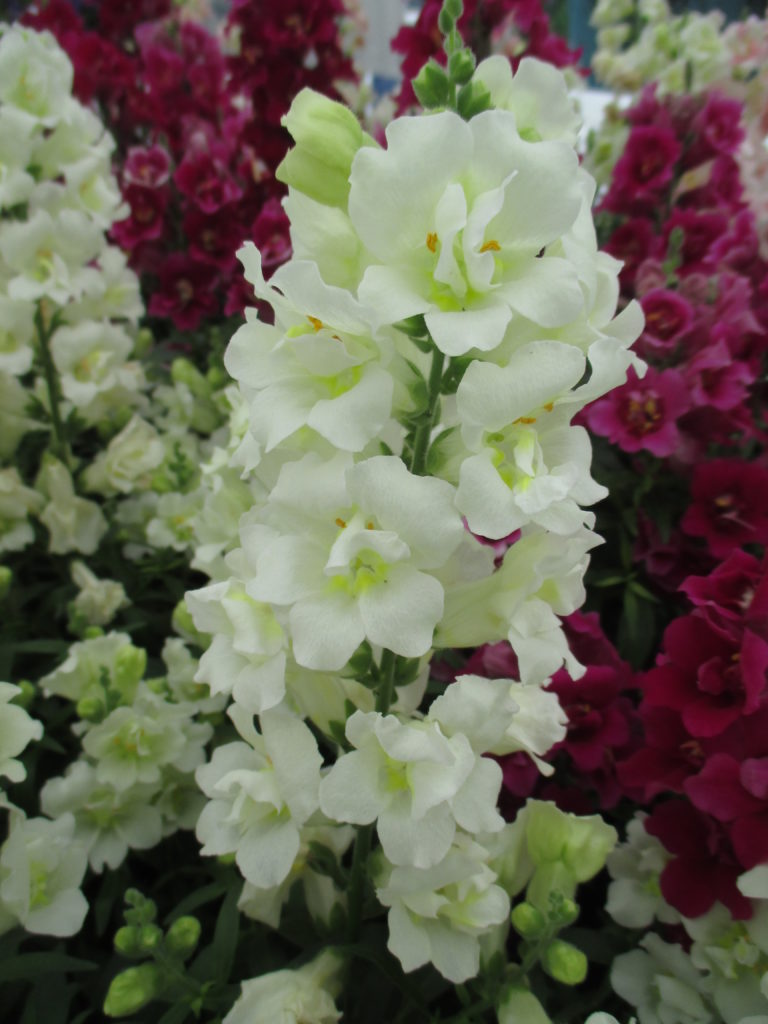
Twinny™ White
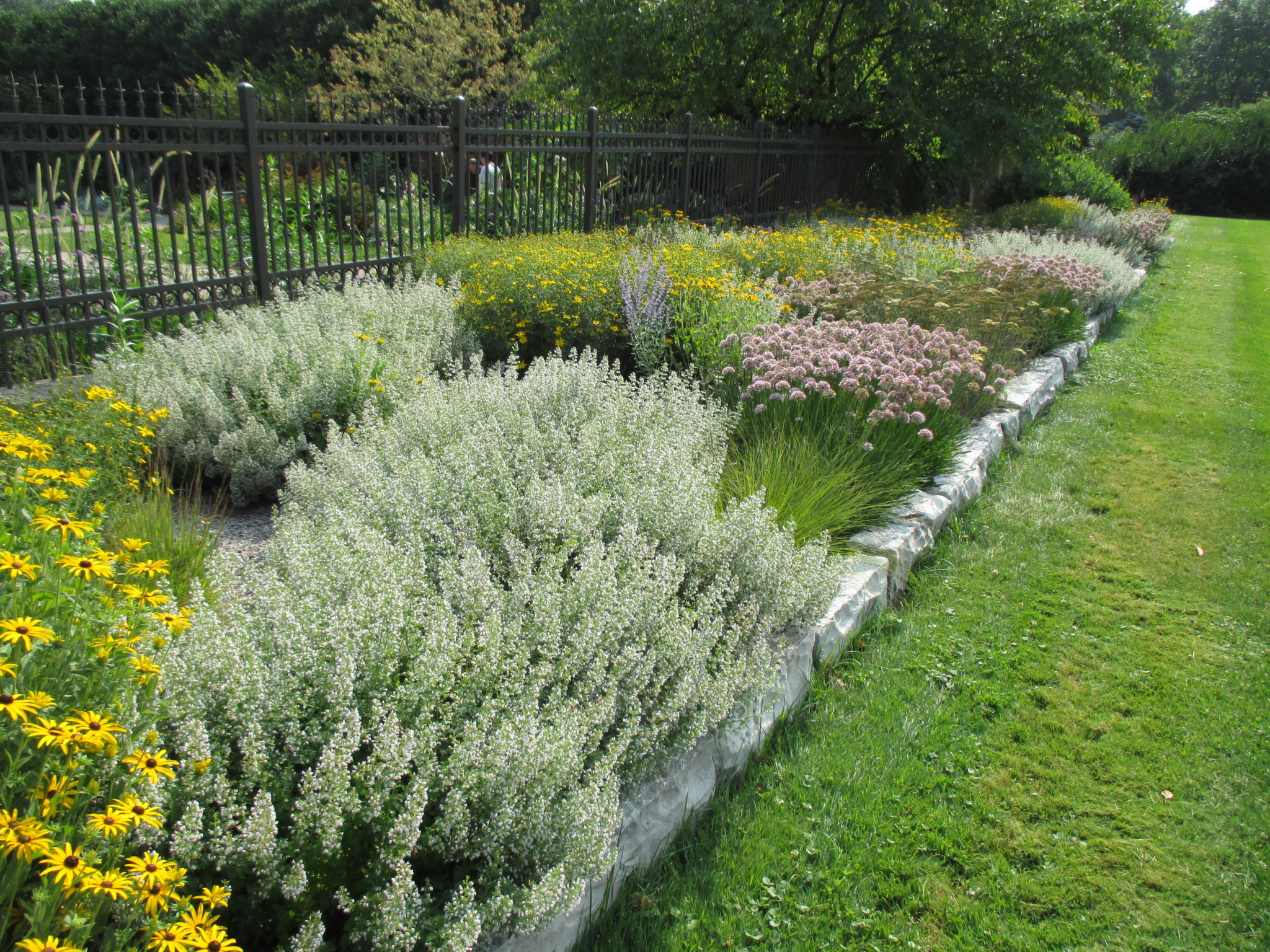

Looking for a tough perennial for a sunny location with a long period of bloom? Check out this ‘Montrose White’ showy calamint (Calamintha nepeta) which provides an airy white effect in drifts or even as a solitary specimen. I was first smitten by this perennial when I saw it years ago at Olbrich Botanical Gardens (OBG) in Madison, WI. In fact, most of these photos are from OBG. We now use it at RBG for the same features that are so apparent. This selection blooms from June until frost and looks like a small baby’s breath with that wispy haze of white over the course of 4-5 months! This selection is sterile which is important to mention as many calamint (Calamintha) selections reseed and might “move around” a bit. Reaching about 18″ tall and 18″ wide, this European native attracts a wide range of pollinators including butterflies and LOTS of bees. Using this plant in drifts is effective and pairing it at the base of leggy perennials helps support them and add interest. OBG uses them extensively along the edges of paths to soften up the “transition” between path and garden bed (see above and below). This perennial (hardy to zone 5 although I’ve seen it do fine in zone 4) is both drought tolerant and seems to shrug off summer humidity with very few insect or disease problems. Well drained soils are ideal although this plant will grow in a wide range of soil types. Calamintha nepeta ‘Montrose White’ is also deer resistant and while the flowers are lightly fragrant, the leaves (when crushed or bruised) have a strong minty scent. I am a huge fan of this perennial and the photos show how impactful this strong blooming, tough perennial can be in the garden.
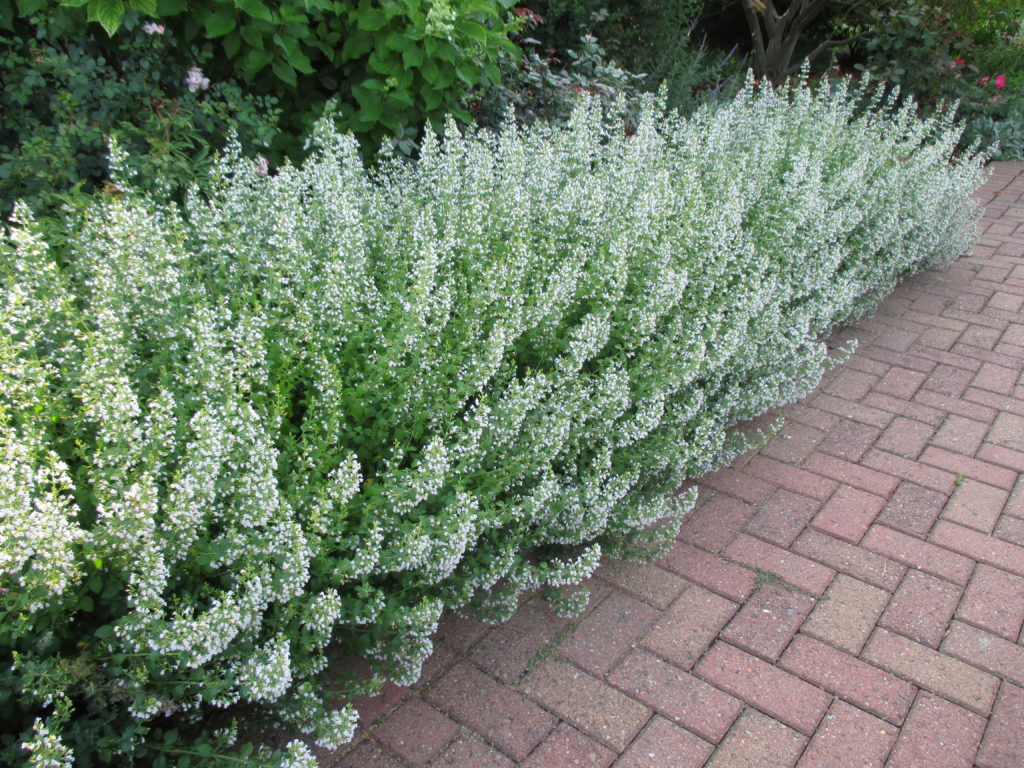
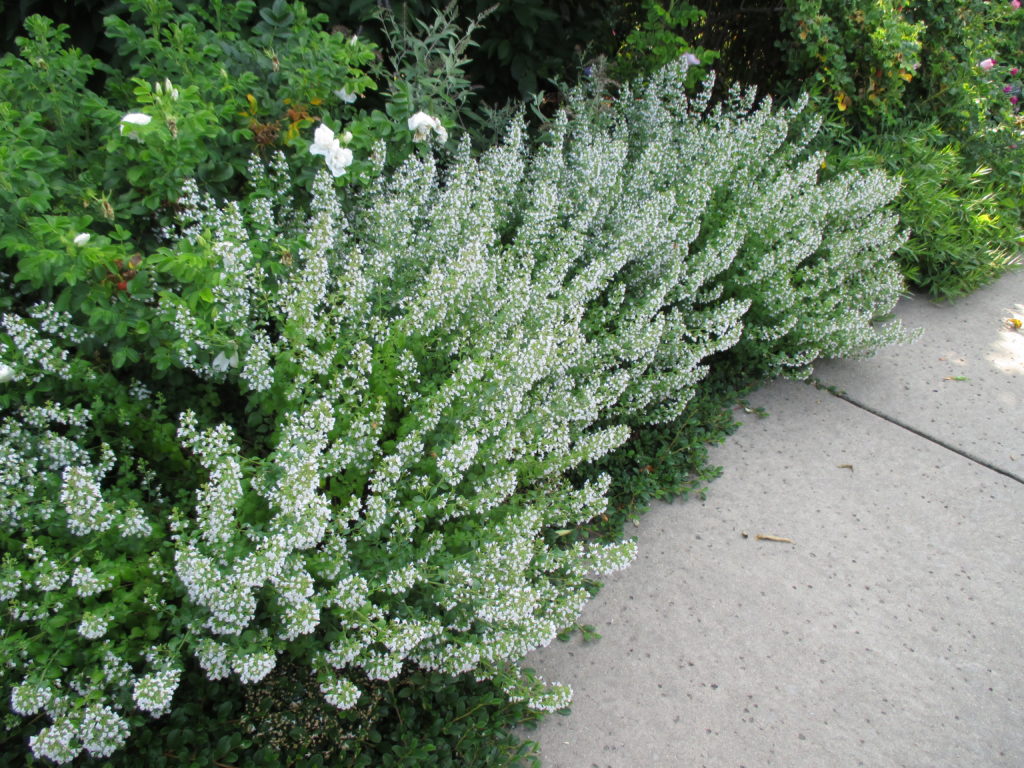
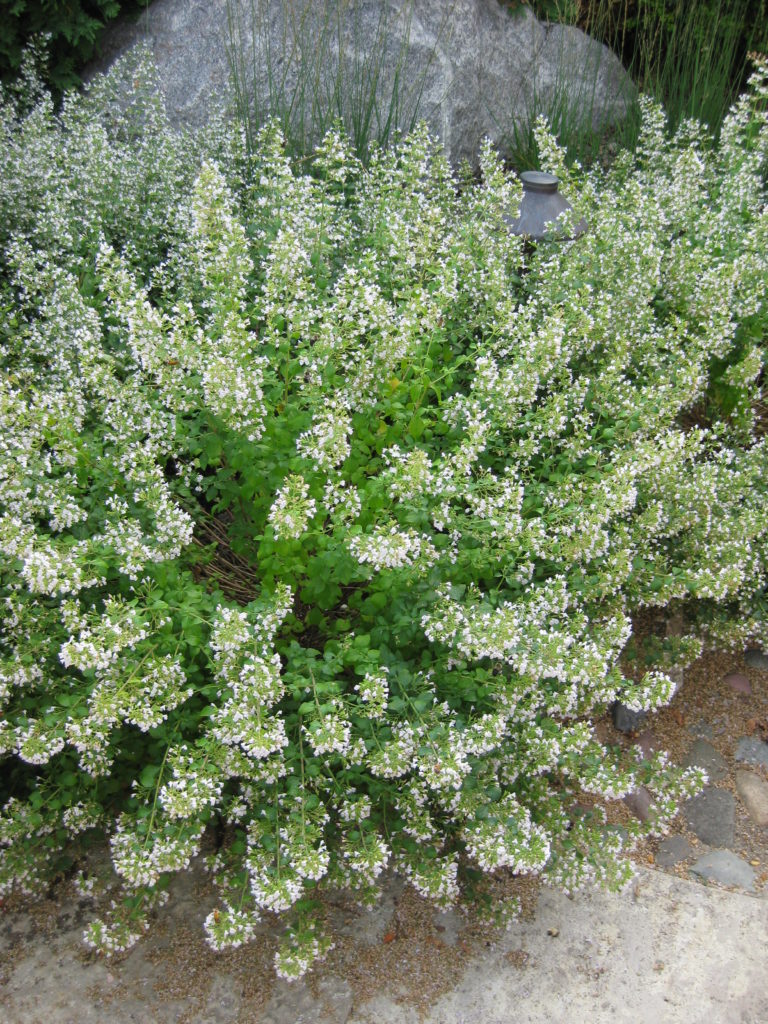
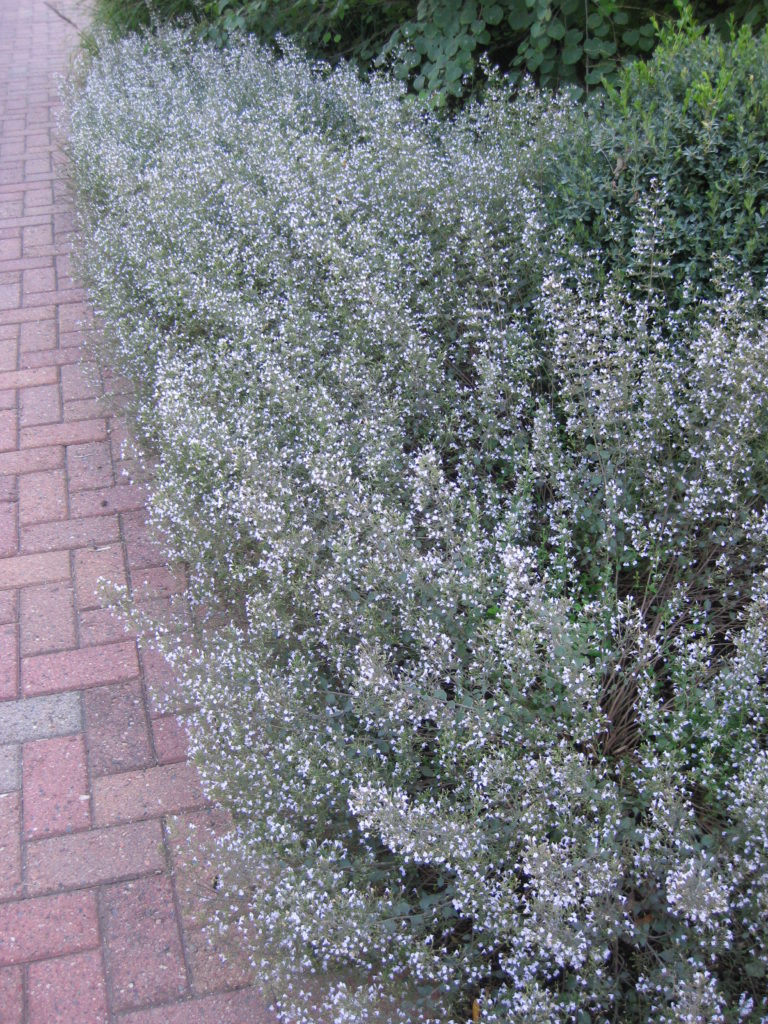
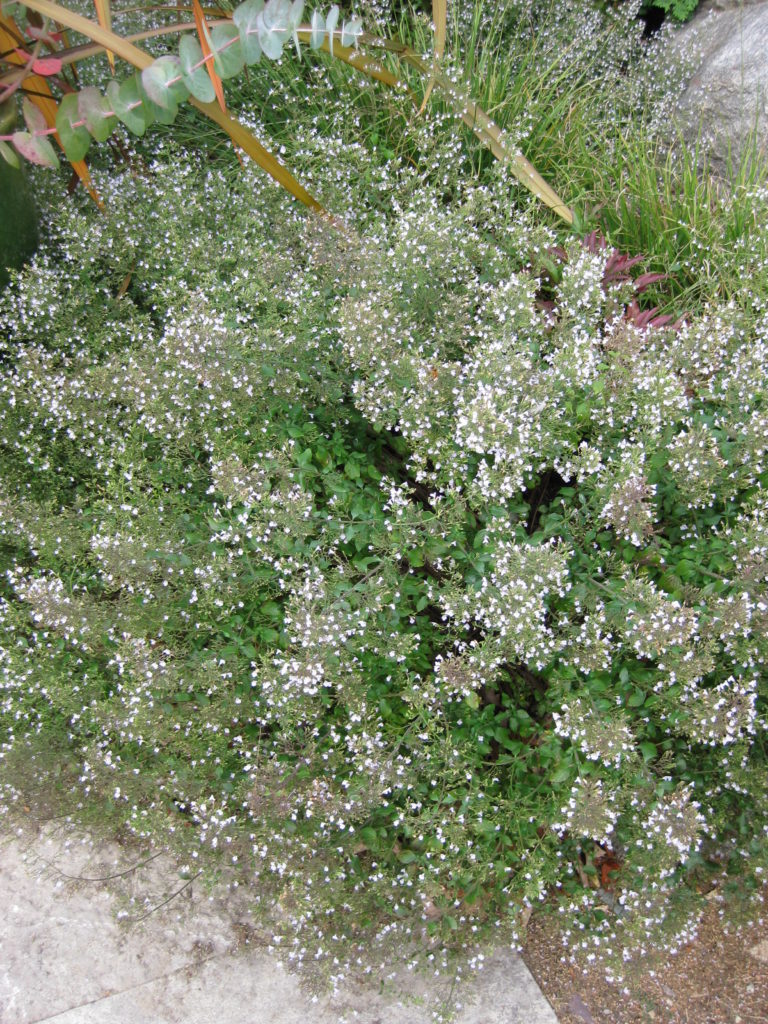
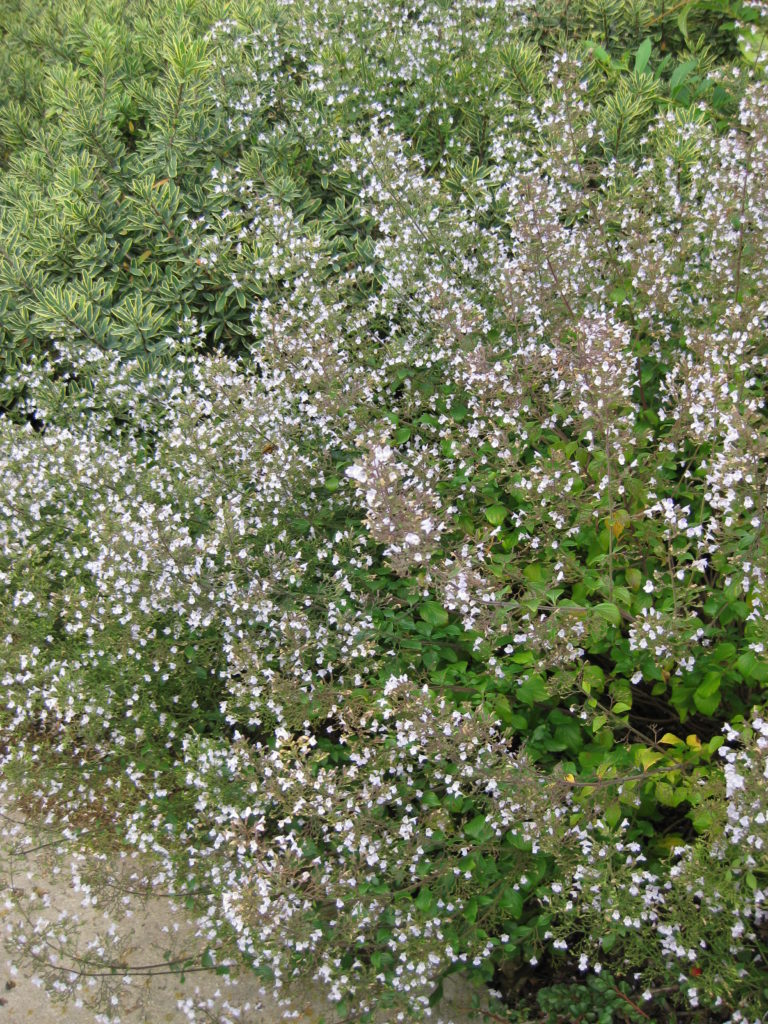
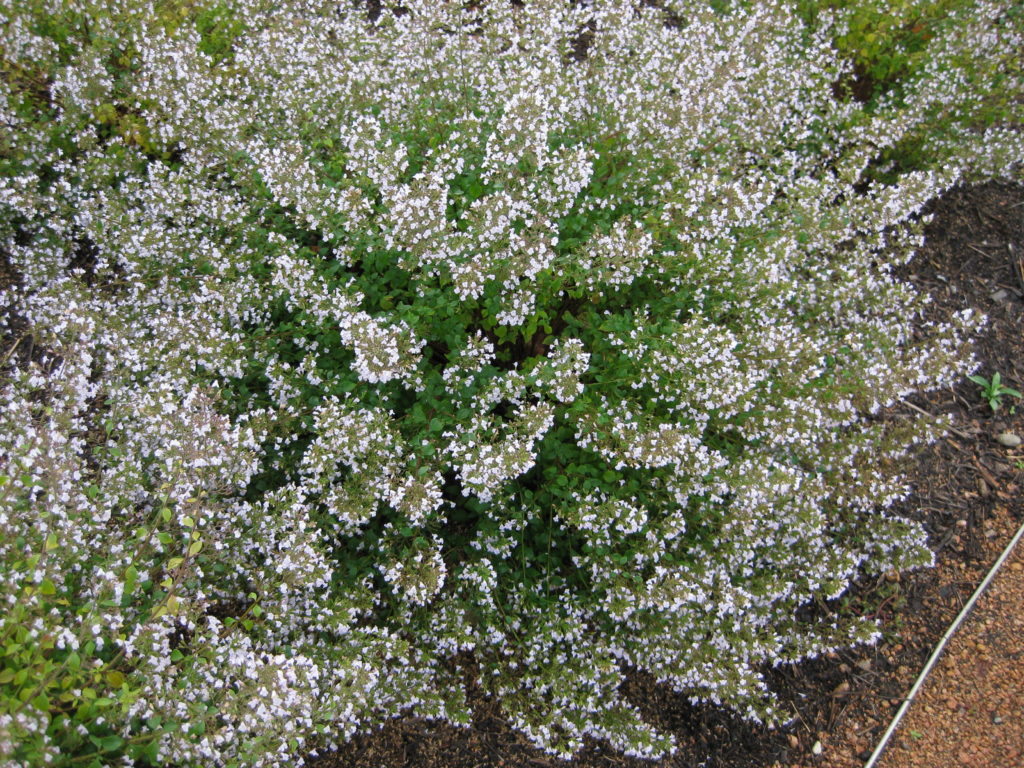
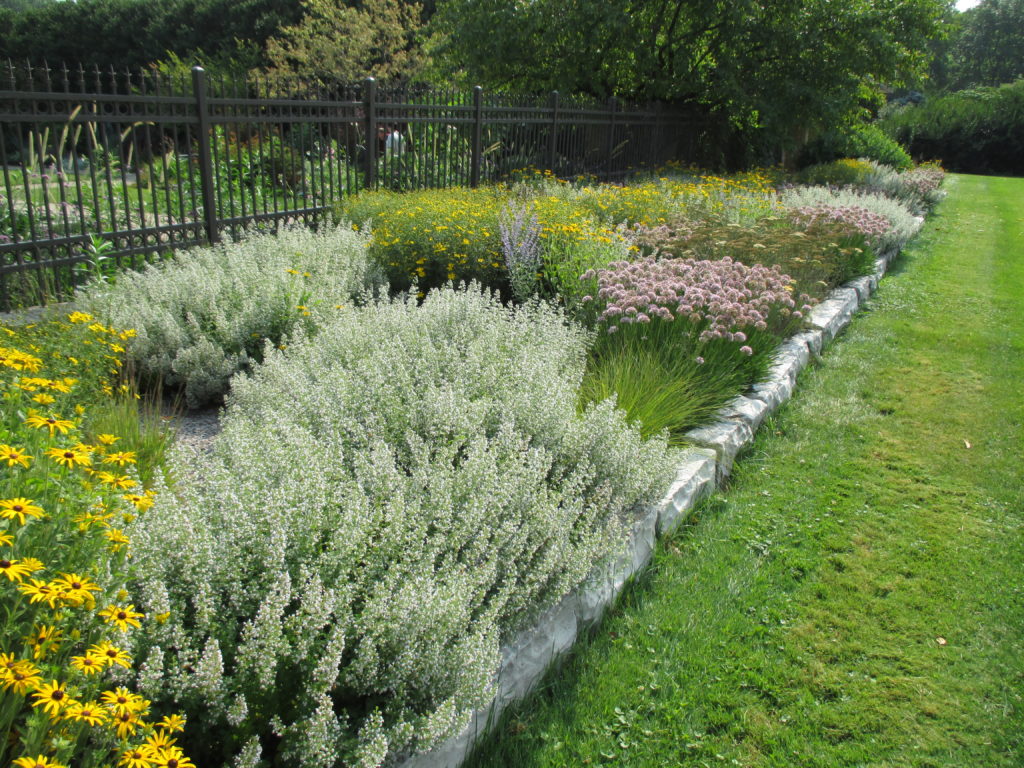
drifts in a gravel garden at Olbrich Botanical Gardens (Madison, WI)
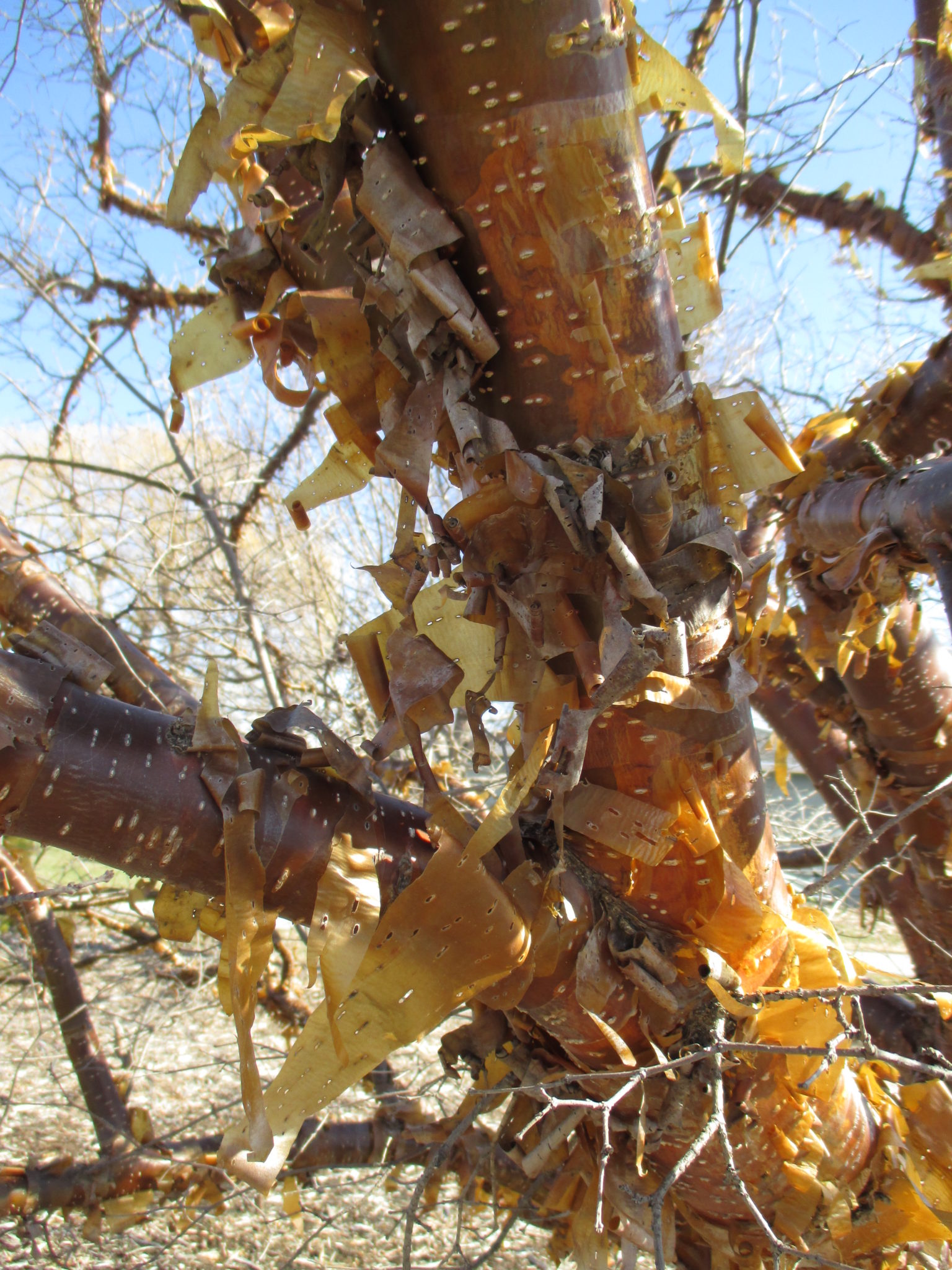
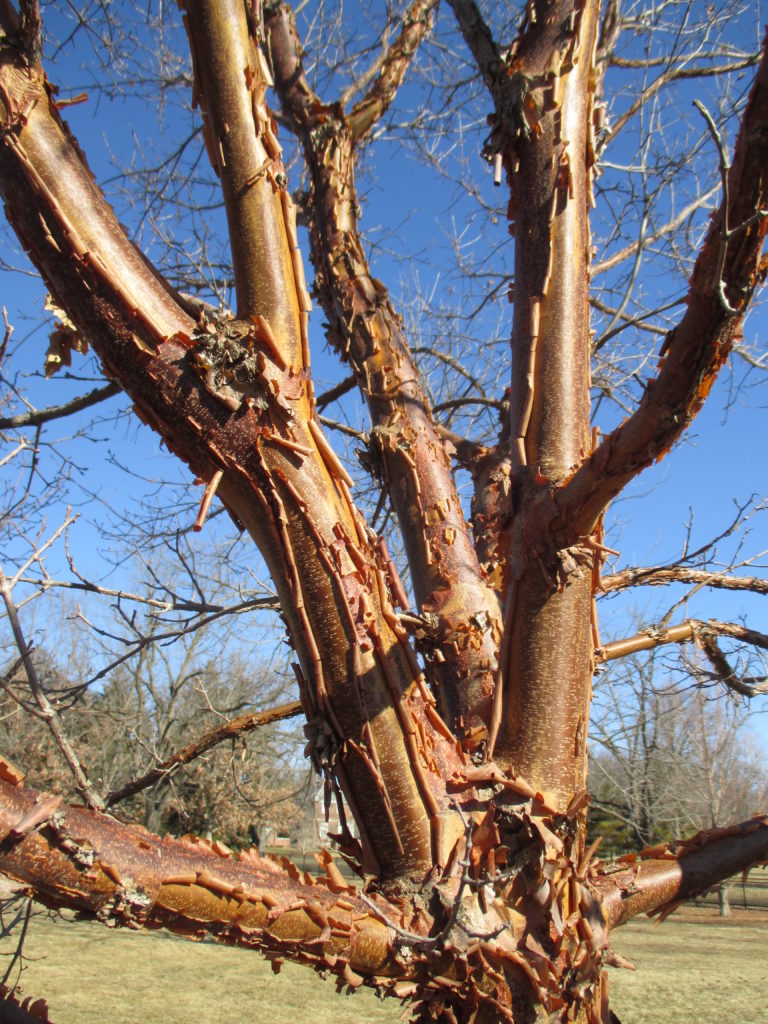
As the winter months drag by, we might look outside and appreciate a fresh snow fall, a colorful conifer, ornamental grasses and/or other details out in the garden. Don’t ever neglect to appreciate the dynamic, and sometimes subtle, contribution that bark provides out in the garden. Colorful stems are certainly of merit but will likely be covered in a separate blog posting. My focus here is sharing the impact of bark like that of the paperbark maple (Acer griseum) seen in the above photo. The contribution of ornamental bark becomes more pronounced once the leaves drop in fall although many conifers also have interesting bark but retain foliage. These photos show a smattering of some of the really neat (in my opinion) woody trees that really add some interest in the winter landscape. Make sure you appreciate the bark!
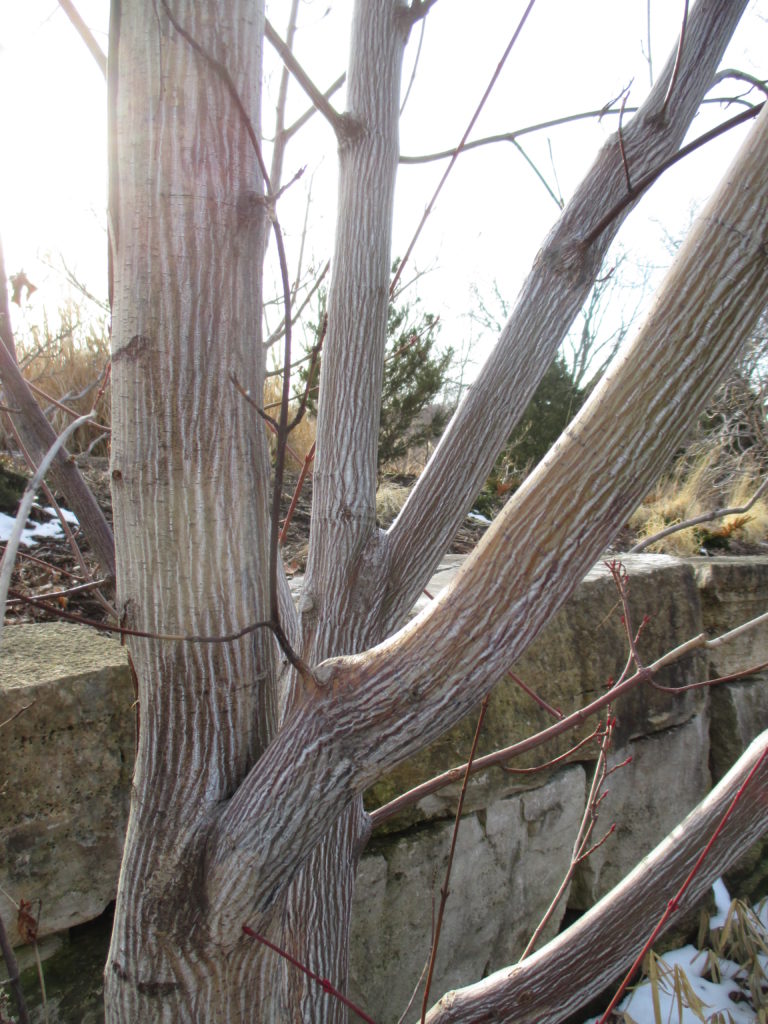
‘White Tigress’ striped bark maple (Acer tegmentosum…although many consider it a hybrid)
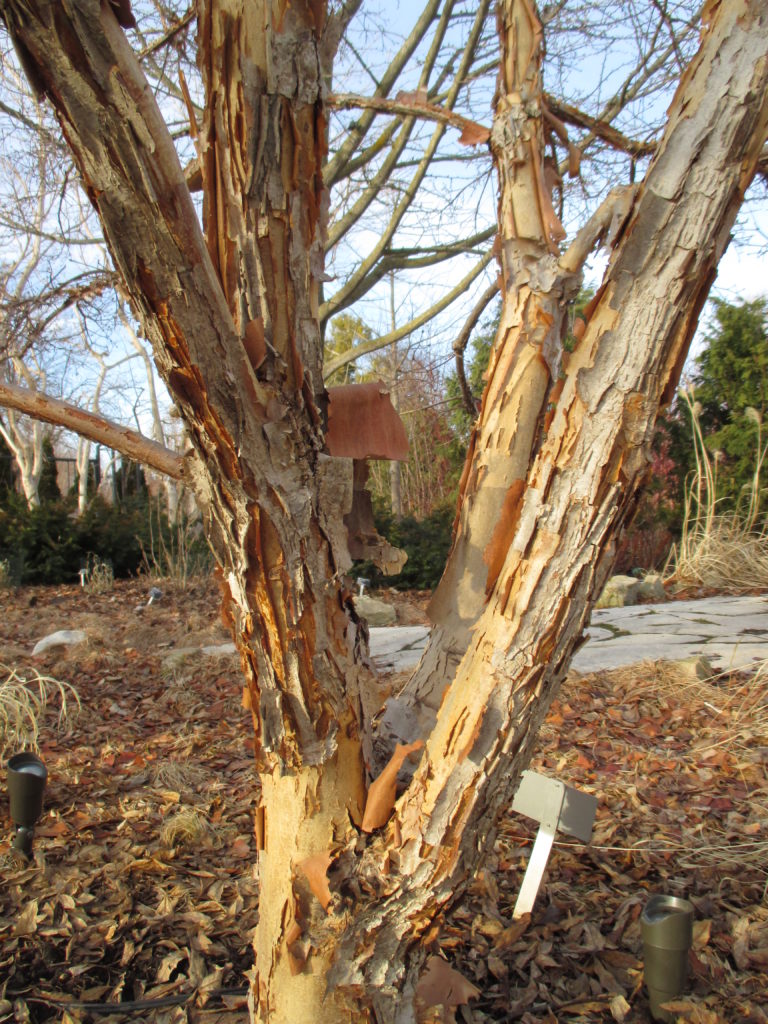
three flower maple (Acer triflorum)
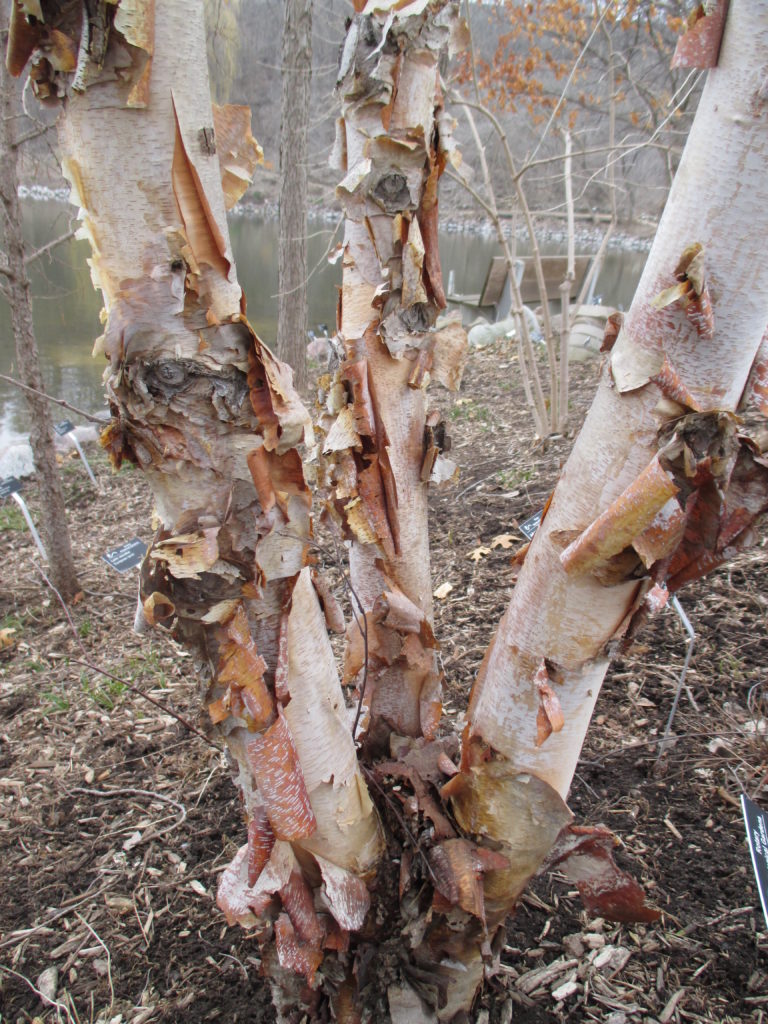
Heritage® river birch (Betula nigra ‘Cully’)
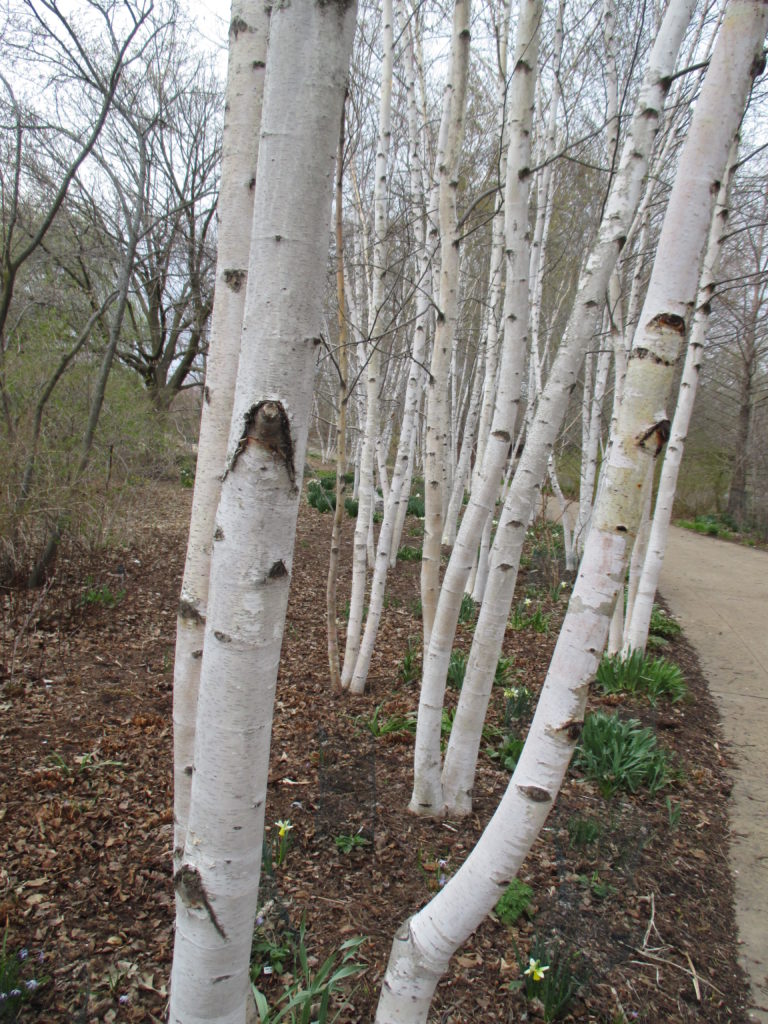
Renaissance Reflection® paper birch (Betula papyrifera ‘Renci’) at Olbrich Botanical Gardens (Madison, WI)
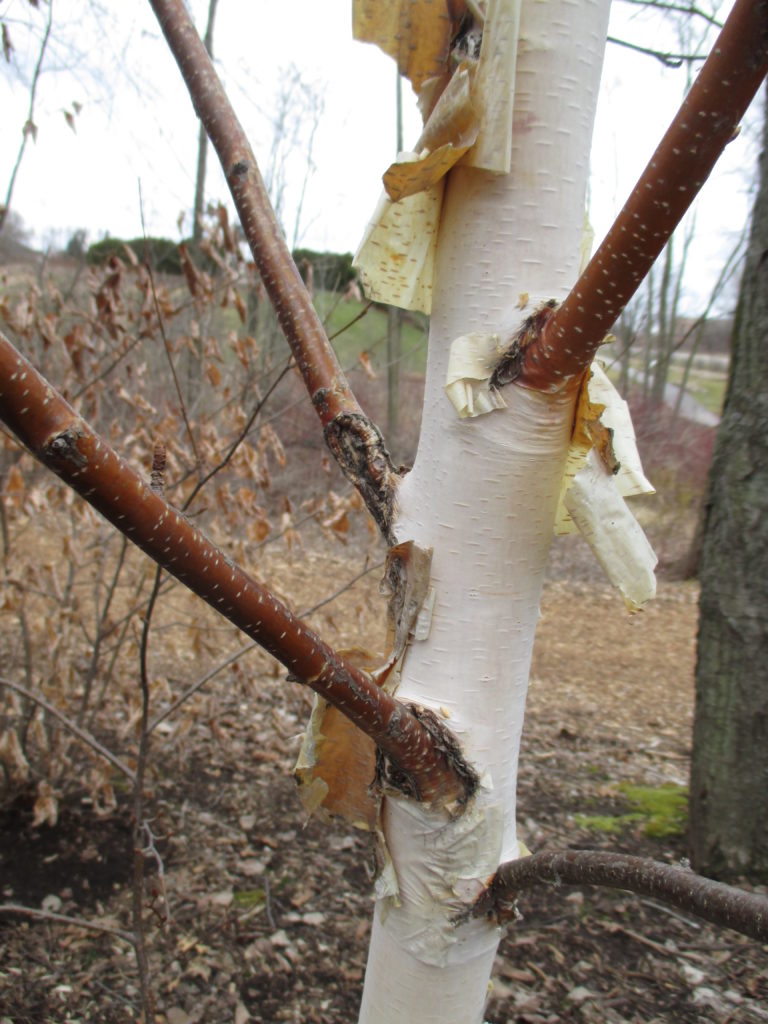
Himalayan birch (Betula utilis subsp. utilis ‘Edinburgh’) at the Green Bay Botanical Garden
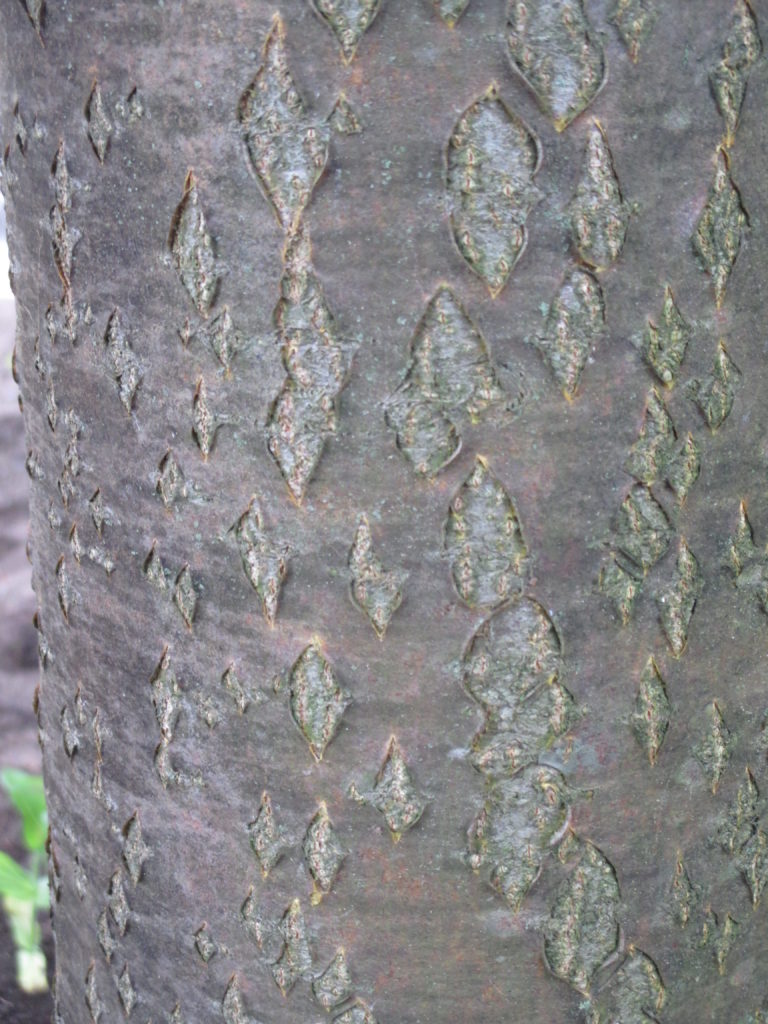
Amur maackia (Maackia amurensis)
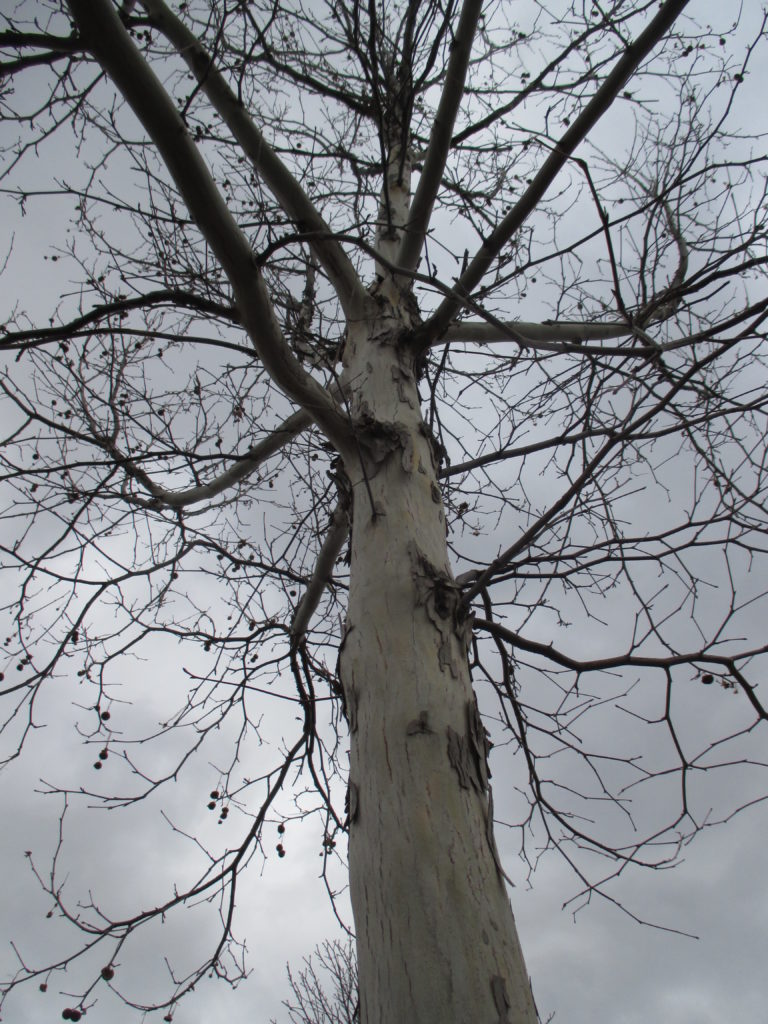
Exclamation!™ London planetree (Platanus x acerifolia ‘Morton Circle’)
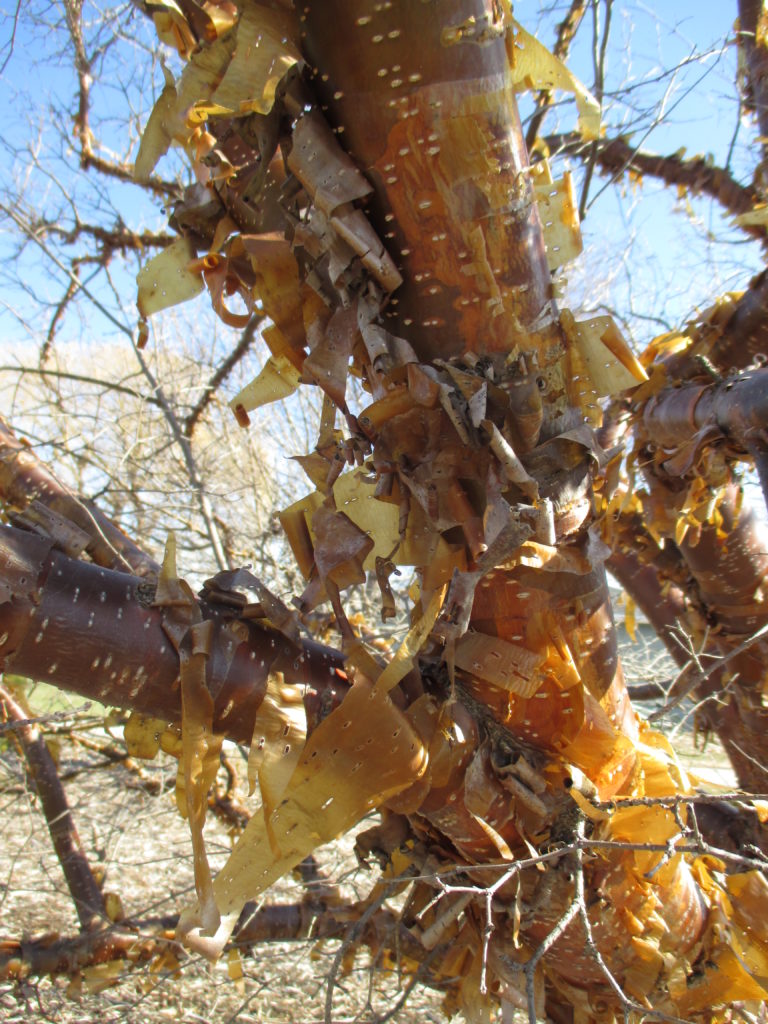
China Snow® tree lilac (Syringa reticulata subsp. pekinensis ‘Morton’)
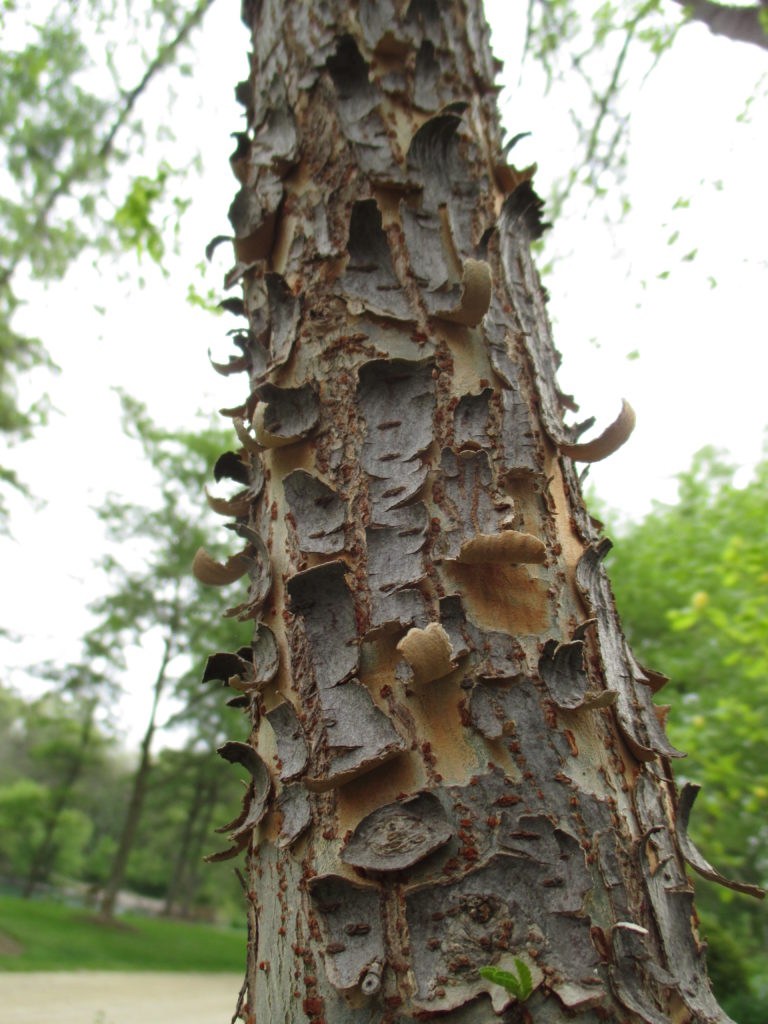
lacebark elm (Ulmus parvifolia ‘Hallelujah’)
![]()
seven-son flower (Heptacodium miconioides) – above and below
![]()
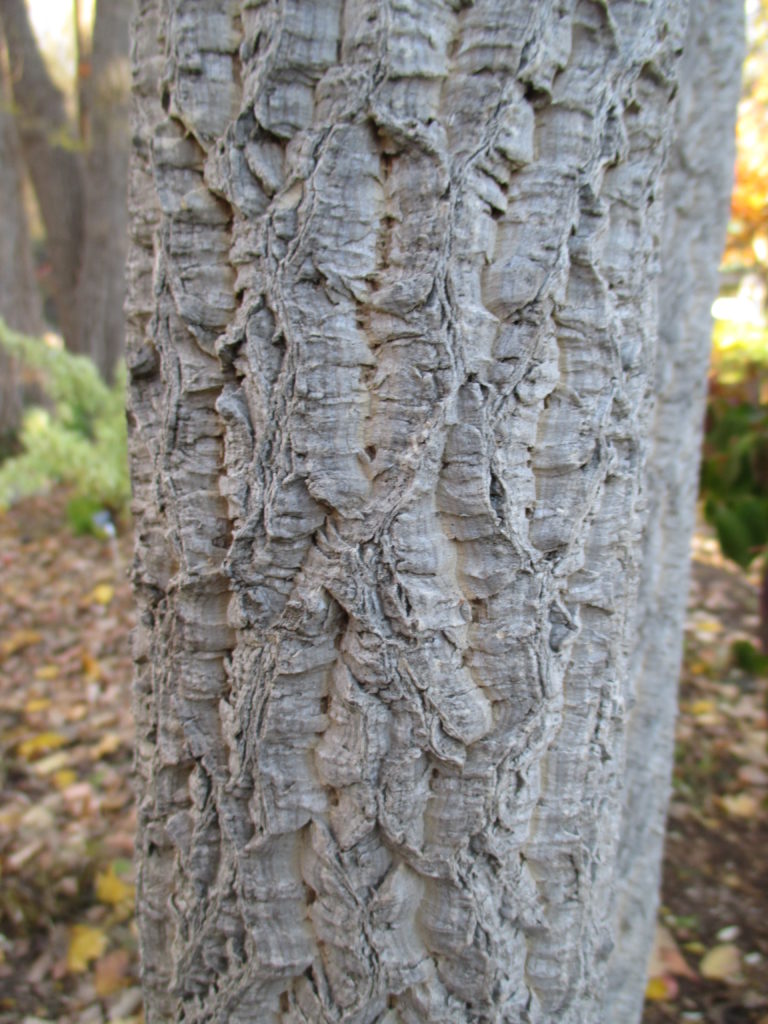
Eye Stopper™ cork tree (Phellodendron lavallei ‘Longenecker’)
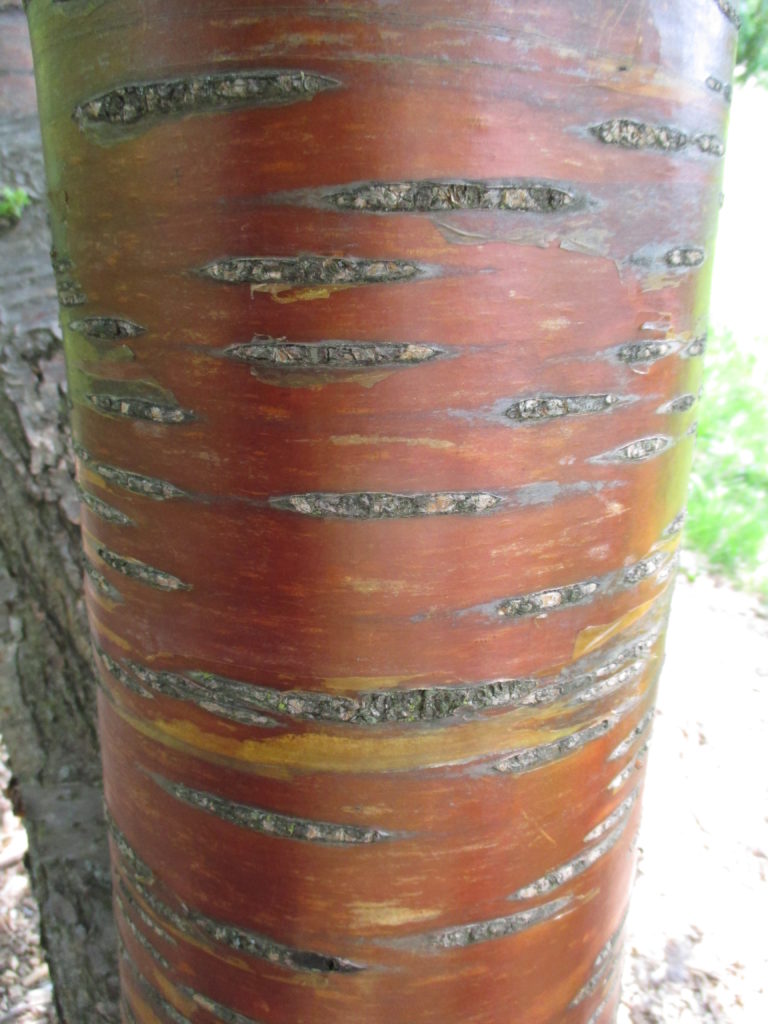
Amur chokecherry (Prunus maackii)

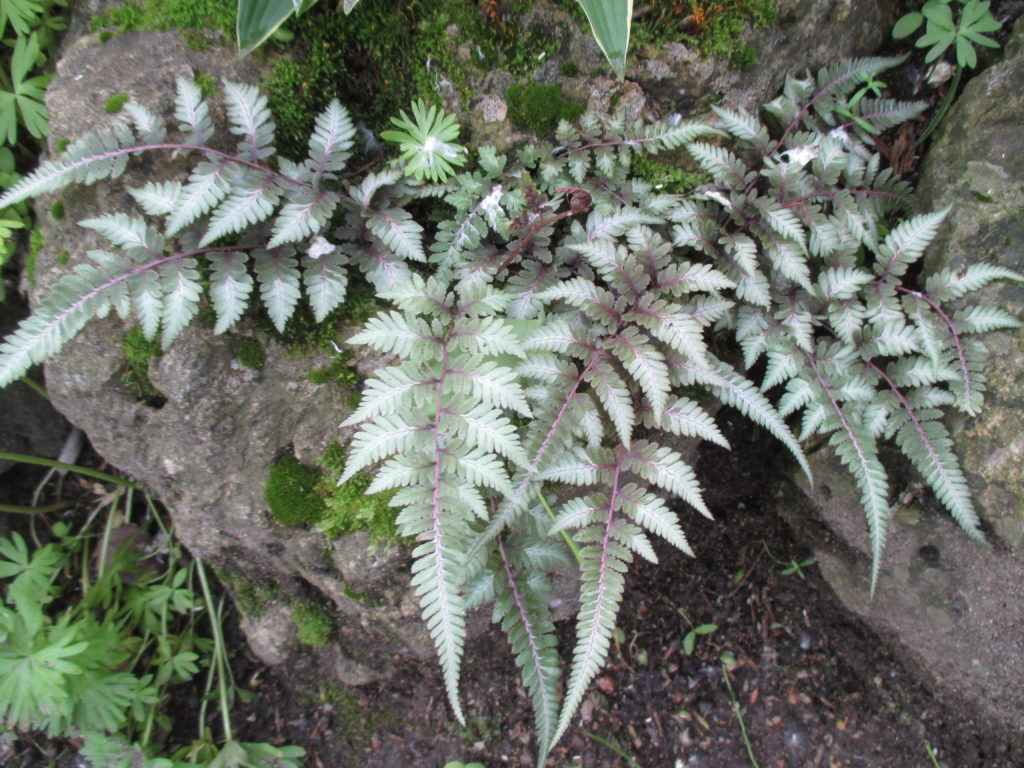
I’ve always enjoyed using and observing Japanese painted ferns (Athyrium niponicum var. pictum) and some of the new hybrids that include a painted fern parent. This blog features only a few of the many options available to the gardener. Our Fern & Moss Garden features over 25 selections of Japanese painted ferns and painted fern hybrids. The illumination that the silver fronds add to the garden is amazing. Most painted ferns have a more intense burgundy hue upon emergence in April with more silvering appearing as the summer progresses. Varieties have been selected due to a more pronounced color. For instance, the variety ‘Silver Falls’ seen below is, what I feel, the painted fern exhibiting the best silver. Ample soil moisture is essential for vigor and some degree of filtered light helps with coloration as well. Younger specimens may also get more intense coloring as they age over the course of many years. We use painted ferns in many locations throughout the gardens and the hybrids I allude to include the parentage of an Athyrium niponicum selection and a lady fern (Athyrium filix-femina). Some noteworthy hybrids include ‘Ghost’, ‘Branford Beauty’, ‘Branford Rambler’ and ‘Ocean’s Fury’ (seen further below). Crested (fan-shaped) foliage (pinnae and pinna) on some selections is amazing particularly with ‘Ocean’s Fury’ (hybrid) and ‘Applecourt’ (Athyrium niponicum). While Japanese painted ferns rarely get taller than 15″, the hybrids will top out between 24″-30″ when happy.
We had a nice turnout of volunteers today. Larry H. and Big John were on hand as staff to work on the take down and processing of the Holiday Light Show (HLS). Alan, Vicki and Steve also helped with retrieval efforts. Peg, Pat, Kathy and Kay all had projects in the office which included plant records, tidying, seed inventorying and some research projects. Out in the shop we had Dr. Gredler, Dave, Jim, Bobby K., Marv,, Steve J., Dick H. and Bill O. We also saw Maury, Chuck, Rollie, Gary, Mark S., Jim H., Maryam, Becky and many others today.
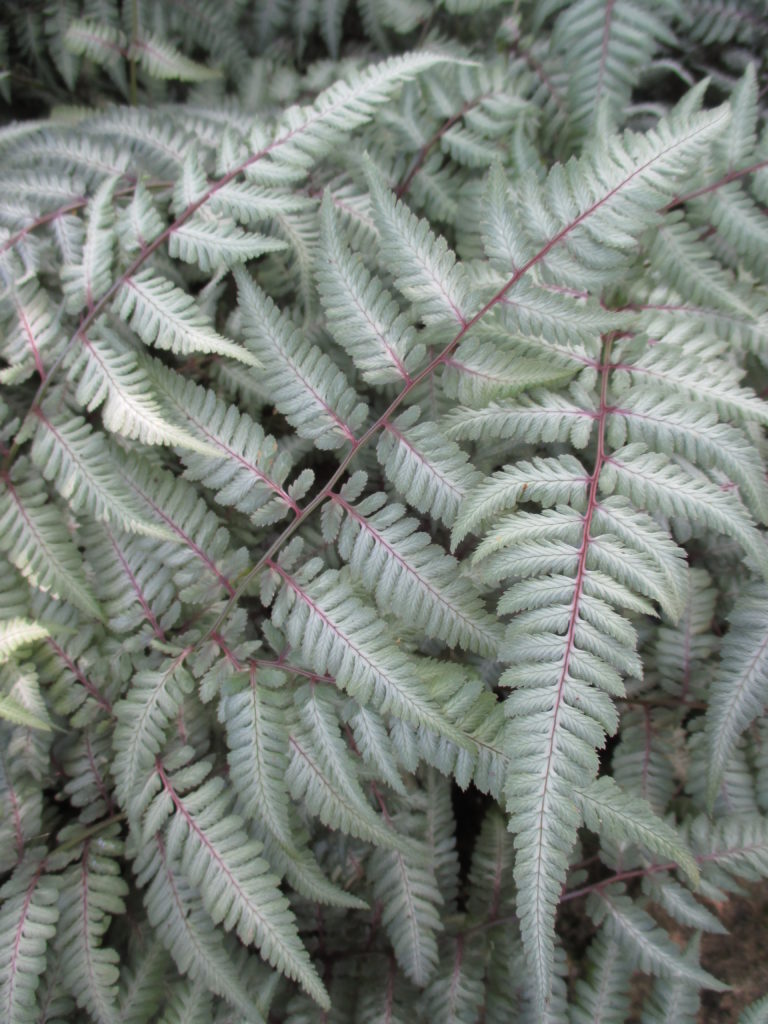
Athyrium niponicum ‘Silver Falls’ (directly above and directly below)

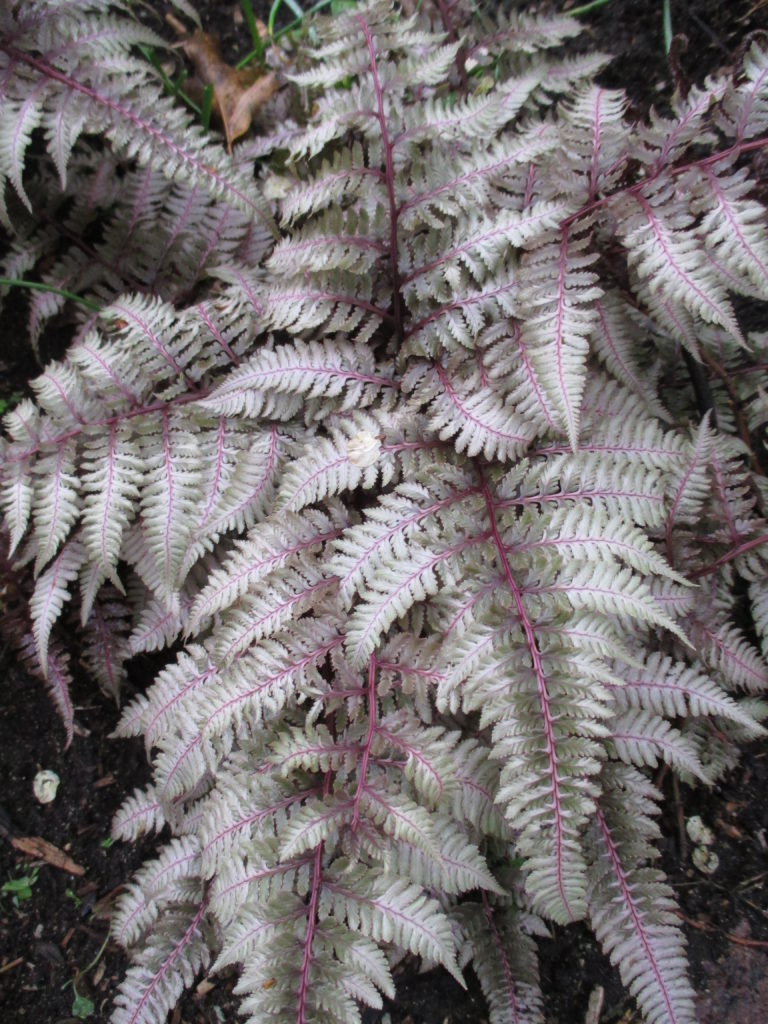
Athyrium niponicum ‘Burgundy Lace’ (photo above and four below)
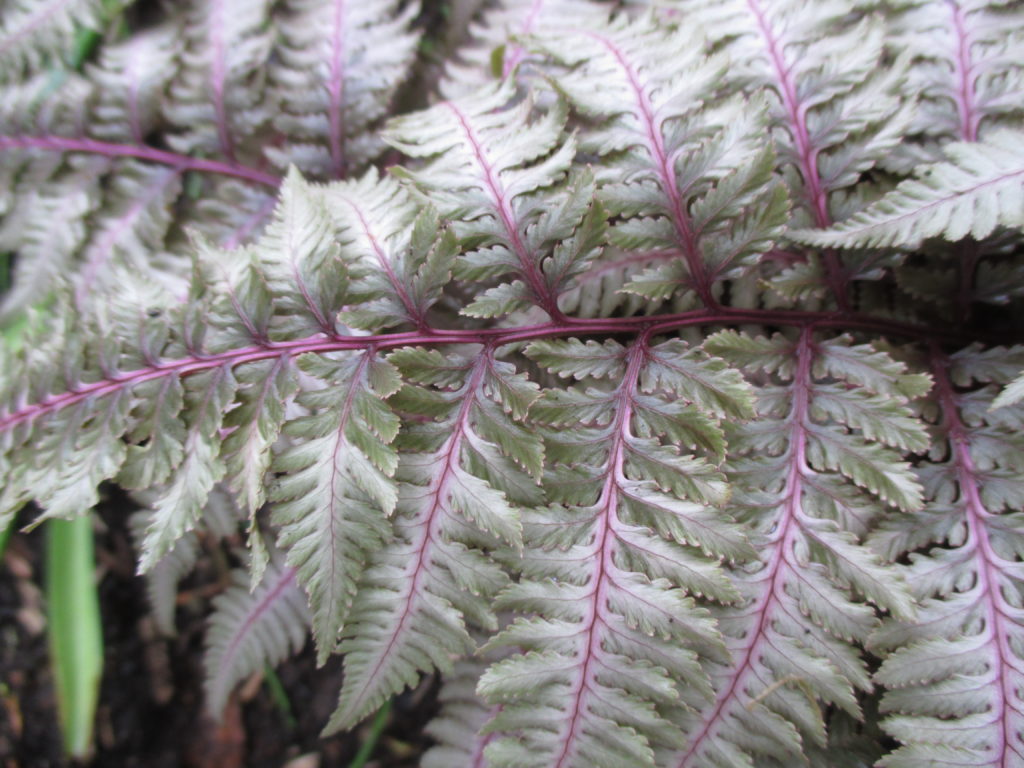
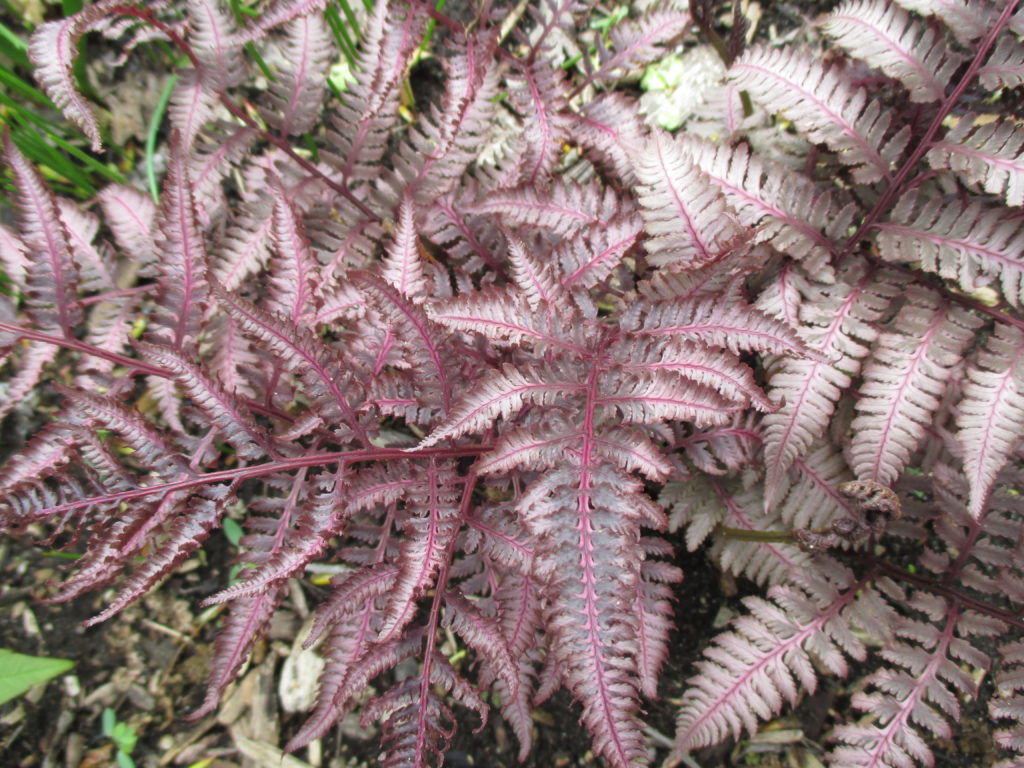
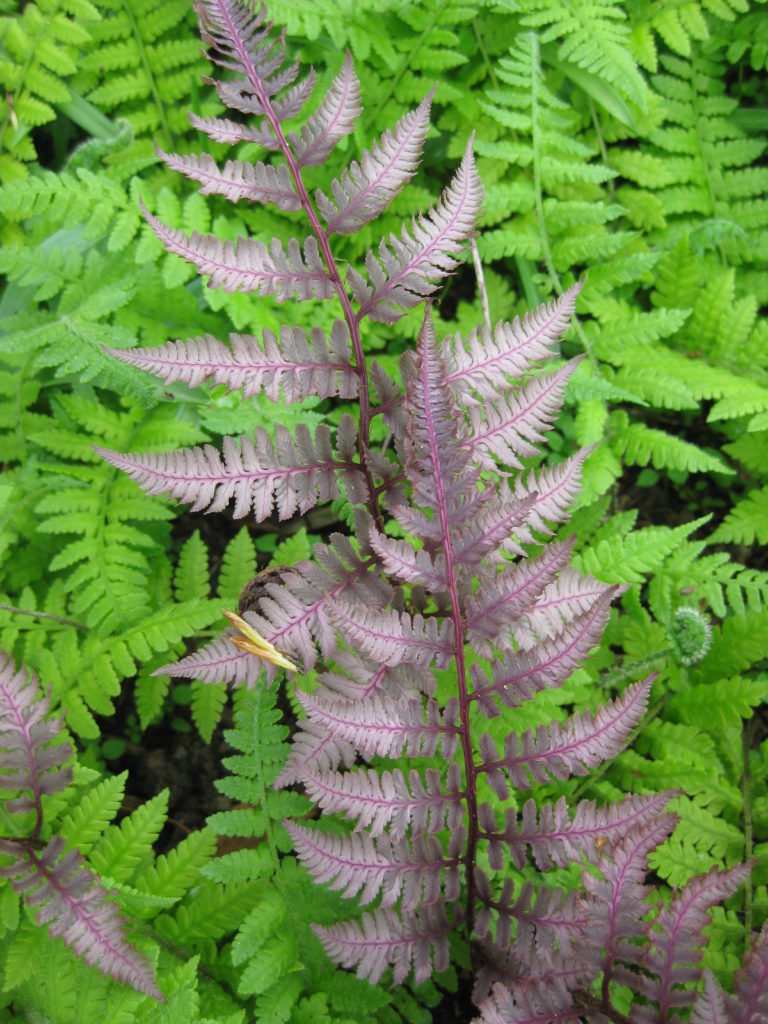
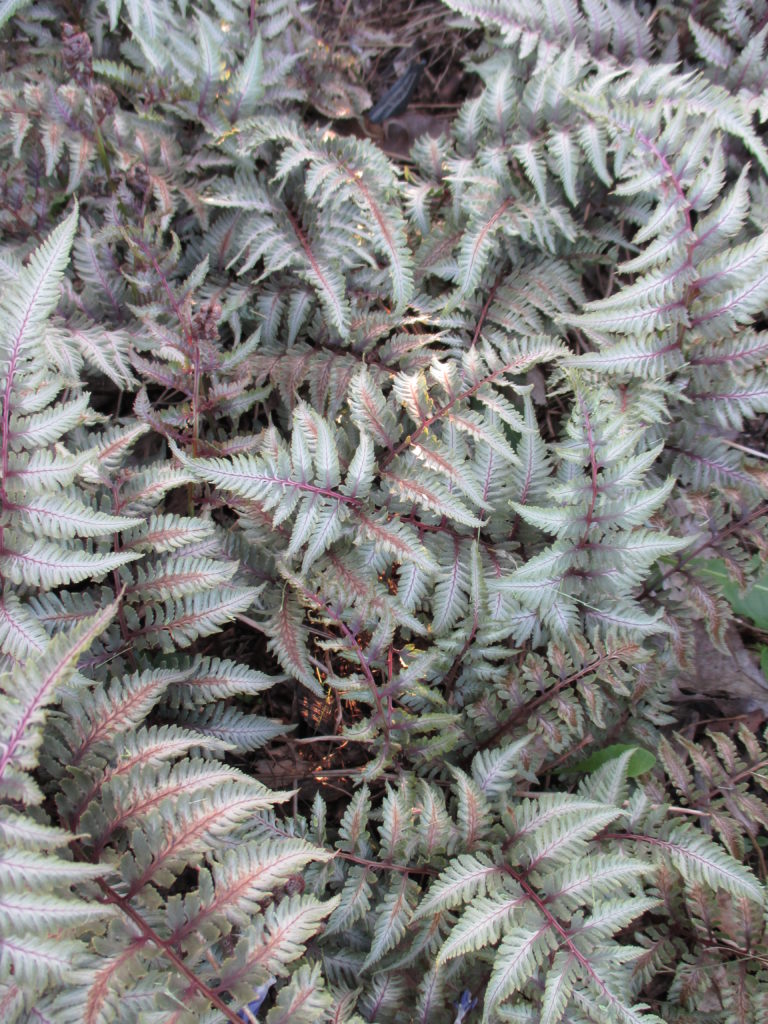
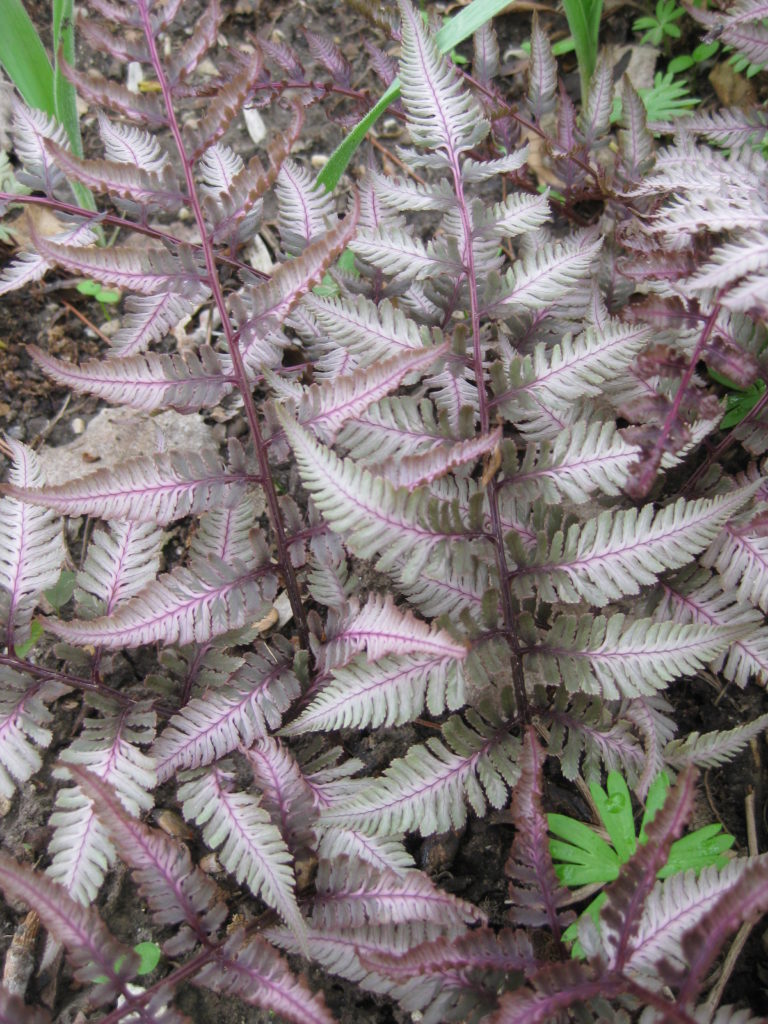
Athyrium niponicum ‘Pewter Lace’ (directly above and directly below)
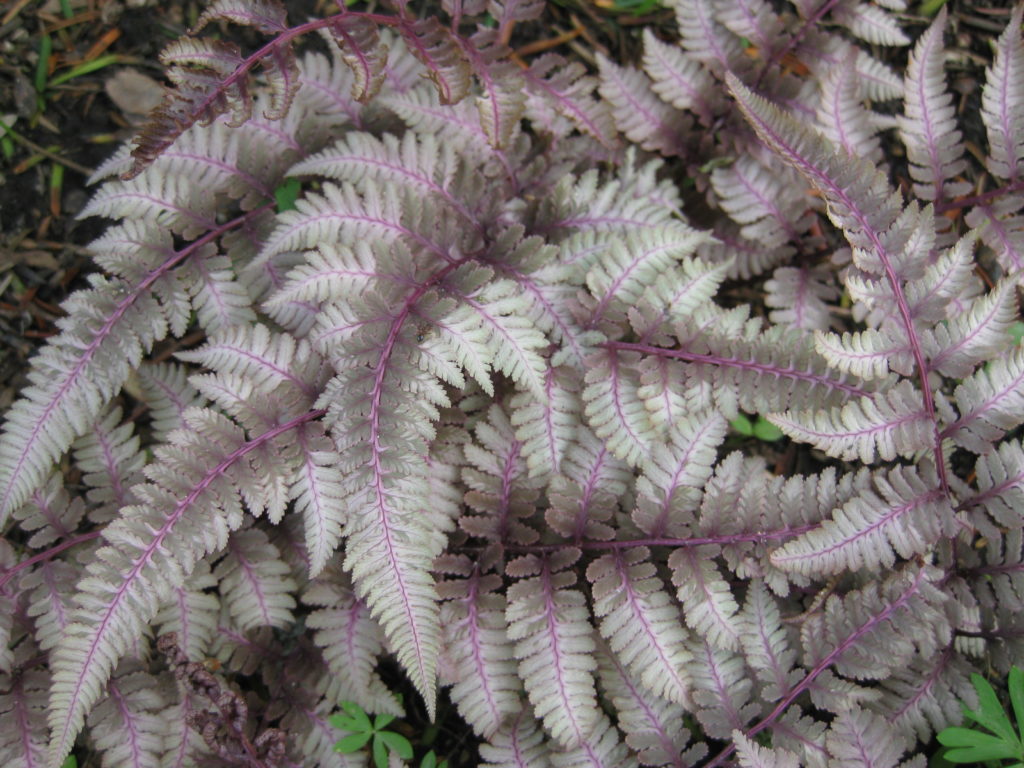
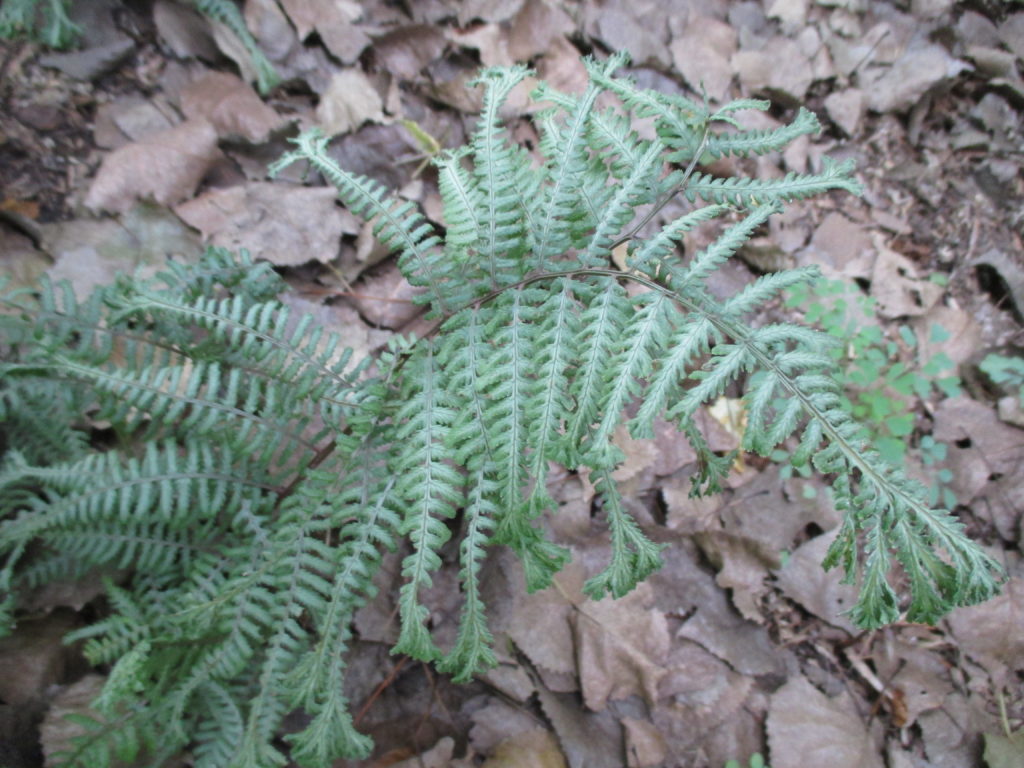
Athyrium hybrida ‘Ocean’s Fury’ (hybrid crested painted fern) – above and all below
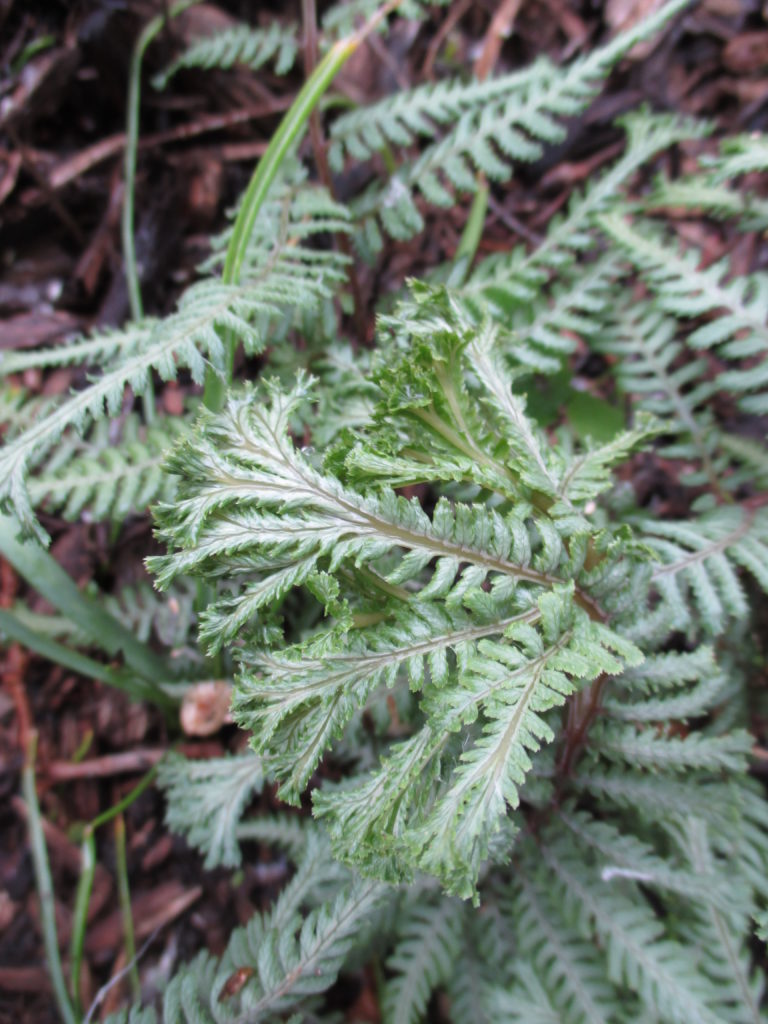
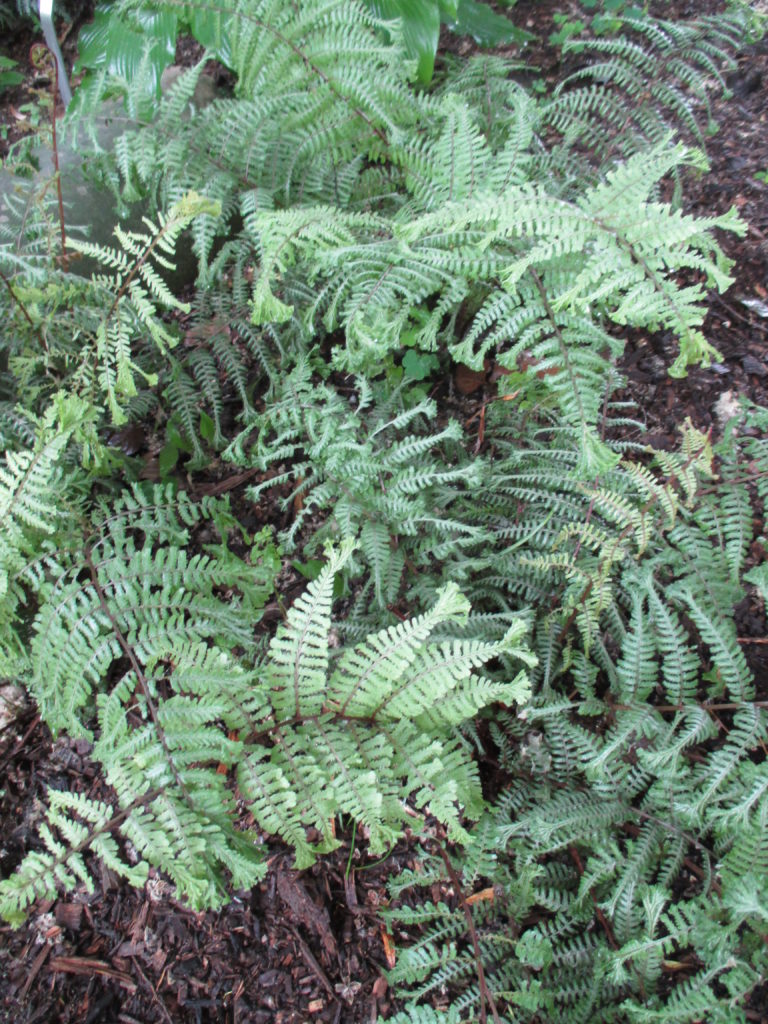
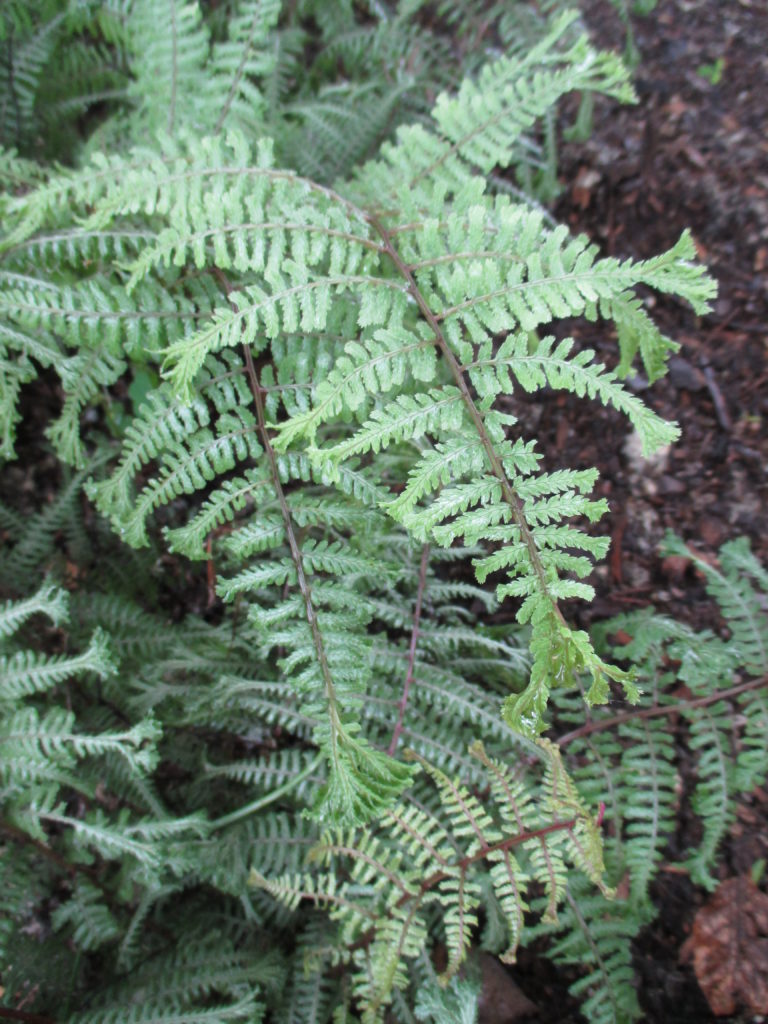
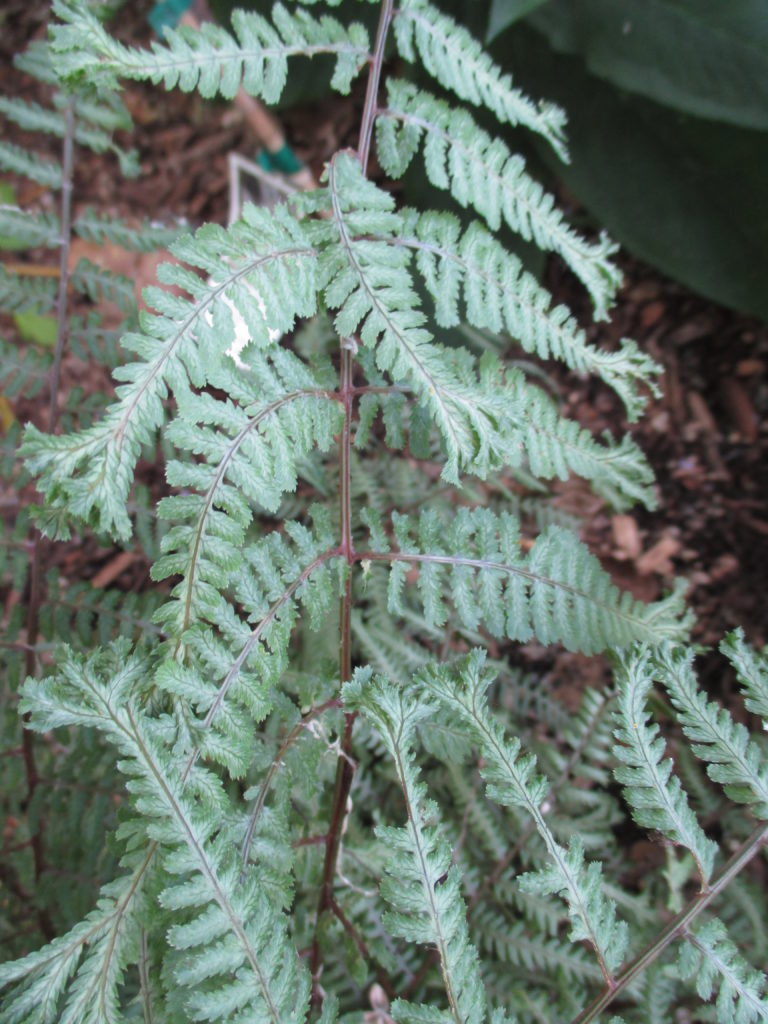
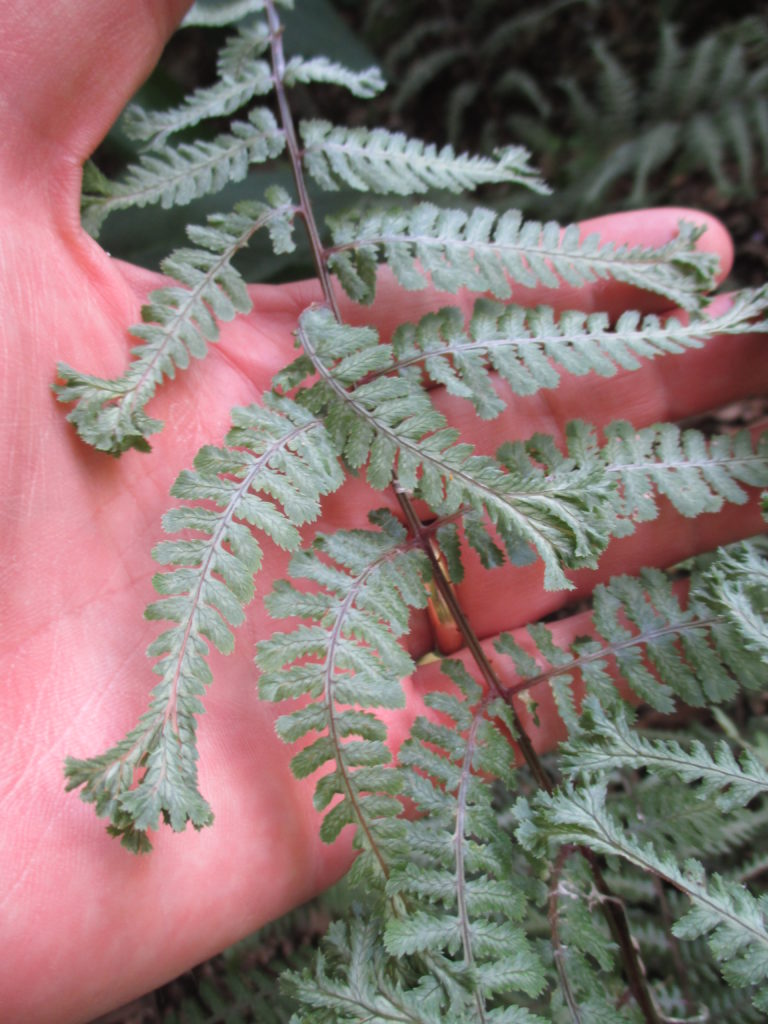
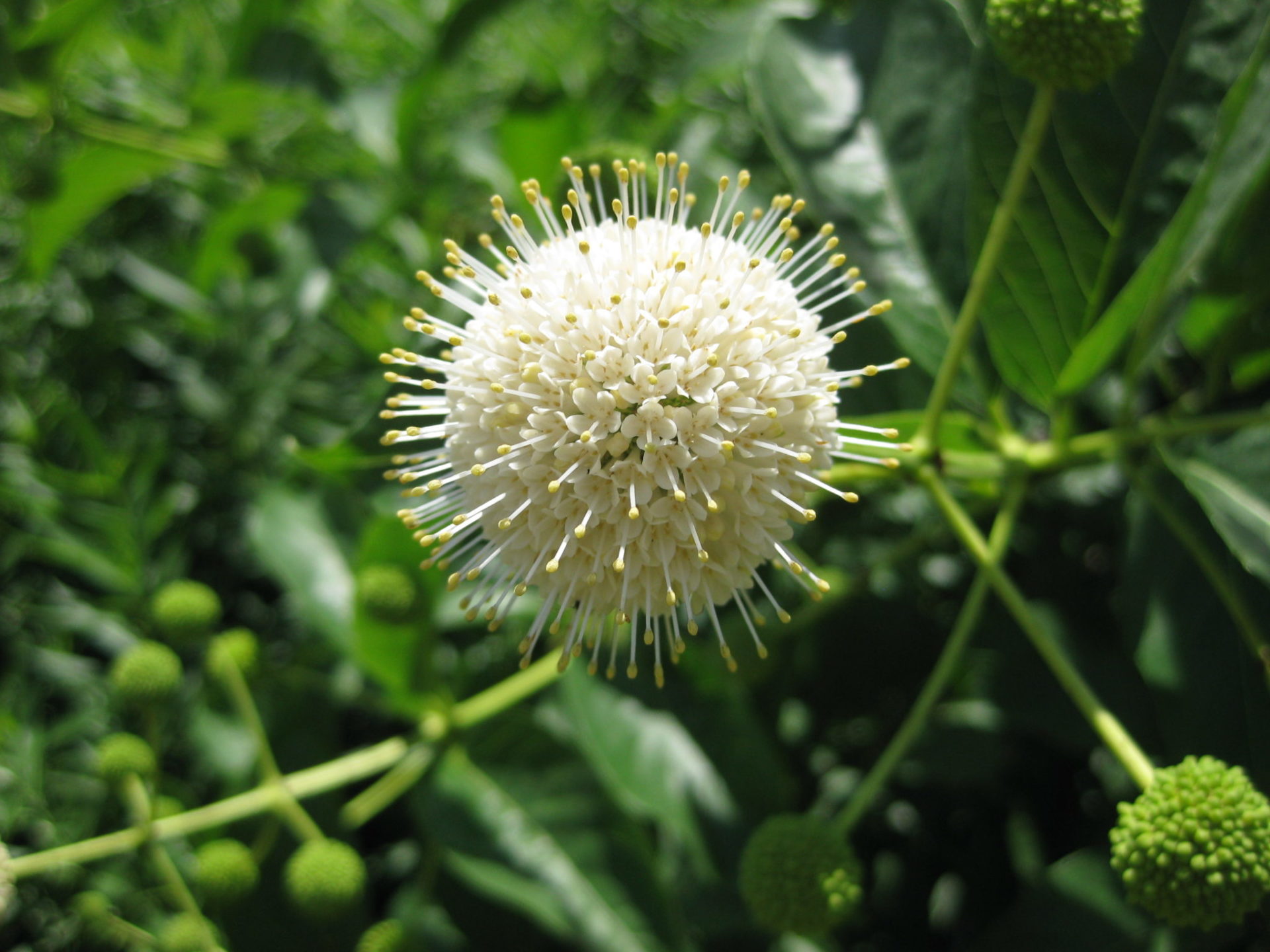
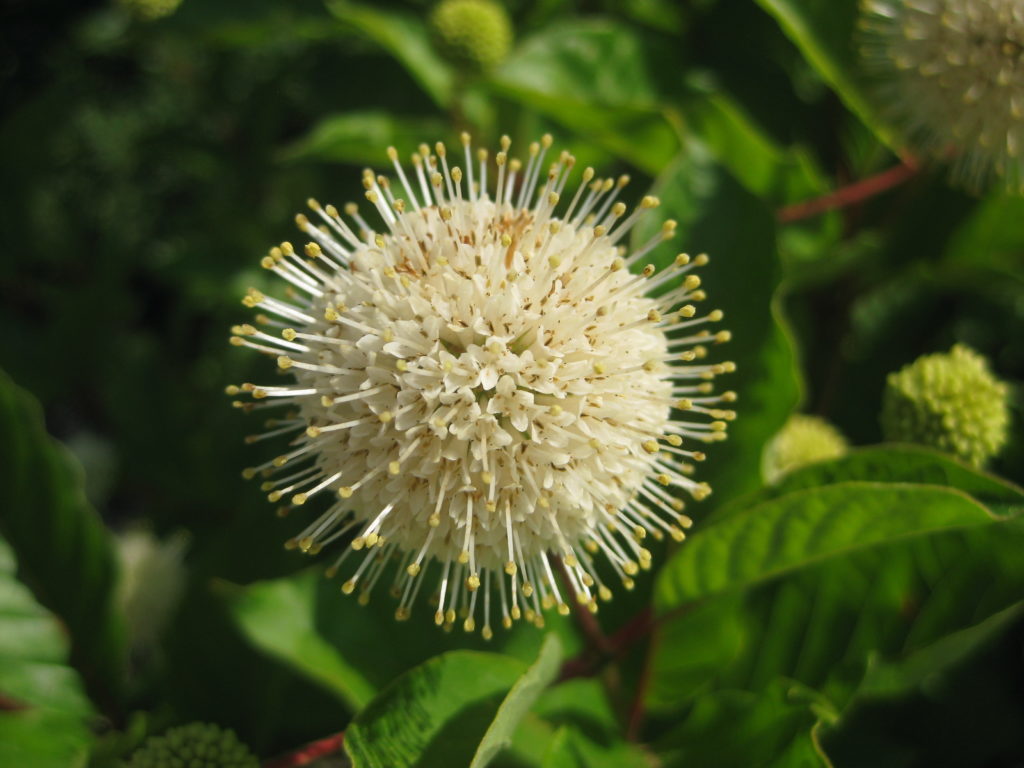
A shrub that I continue to promote in our area is the North American native buttonbush (Cephalanthus occidentalis) featured throughout this blog. Oddly enough I first saw this plant as a child in the wetlands of upstate New York where my grandparents lived. I vividly remember seeing the interesting blooms (above and below) on these large shrubs that were near my grandparents summer camp. They were thriving in a wet location that frequently had standing water. That’s exactly what buttonbush (also called button-willow, honey bush and honey balls) prefers and they are frequently used in rain gardens and along wet edges. There are six other species of Cephalanthus although Cephalanthus occidentalis is native to a wide range of the Eastern U.S. and Midwest (Z5). This shrub get 6-12′ tall although larger specimens are not unknown. I normally observe this plant at about 6′-8′ in our area although there are some more compact varieties mentioned further below. The interesting flowers appear in June and really are quite fetching. They emerge white or the lightest of pinks and hold their shape as they form in to fruiting structures (see further below). The flowers are also slightly fragrant and attract a wide range of wildlife including pollinators like bees and many species of butterflies. The large, glossy foliage is rarely affected by insects or diseases and can transition to a decent fall color too (see bottom photo). This shrub is also deer resistant and rarely bothered. Positioned in full sun or part sun, this distant member of the coffee family (Rubiaceae) will thrive in our climate but does not exhibit drought tolerance. Don’t let it get thirsty! There is a variety called ‘Sputnik’ which seems to not vary much from the traditional species. However, the selection First Editions® Fiber Optics™ (‘Bailoptics’) from Bailey Nursery only gets 6′ x6′ and the selection Sugar Shack® (SMCOSS) from Proven Winners® is listed at 4’x4′. This is a tough, durable plant that offers form, function, wildlife value, potential in damp locations and is also very beautiful. Check it out!
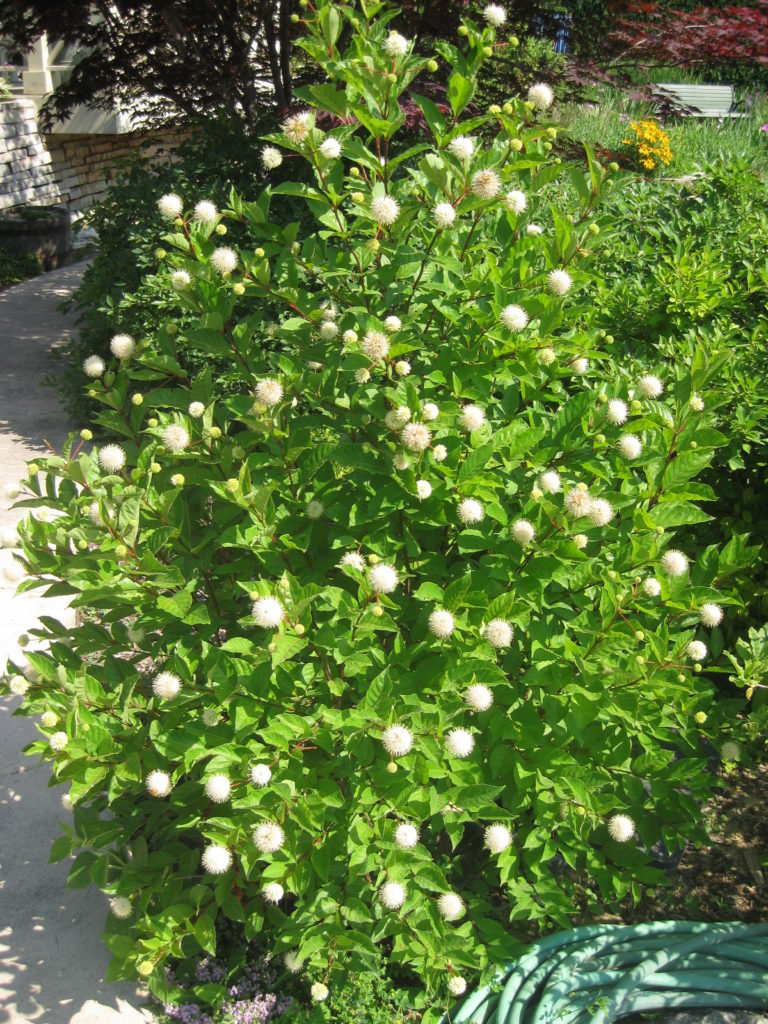
buttonbush at Allen Centennial Gardens (UW-Madison)
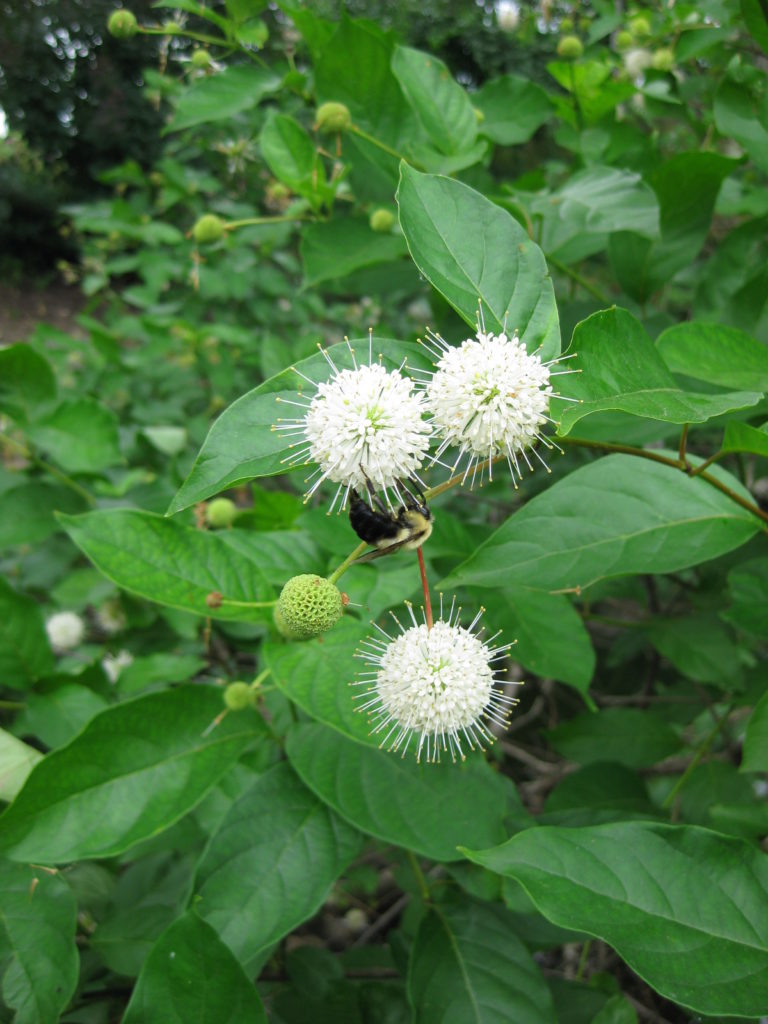
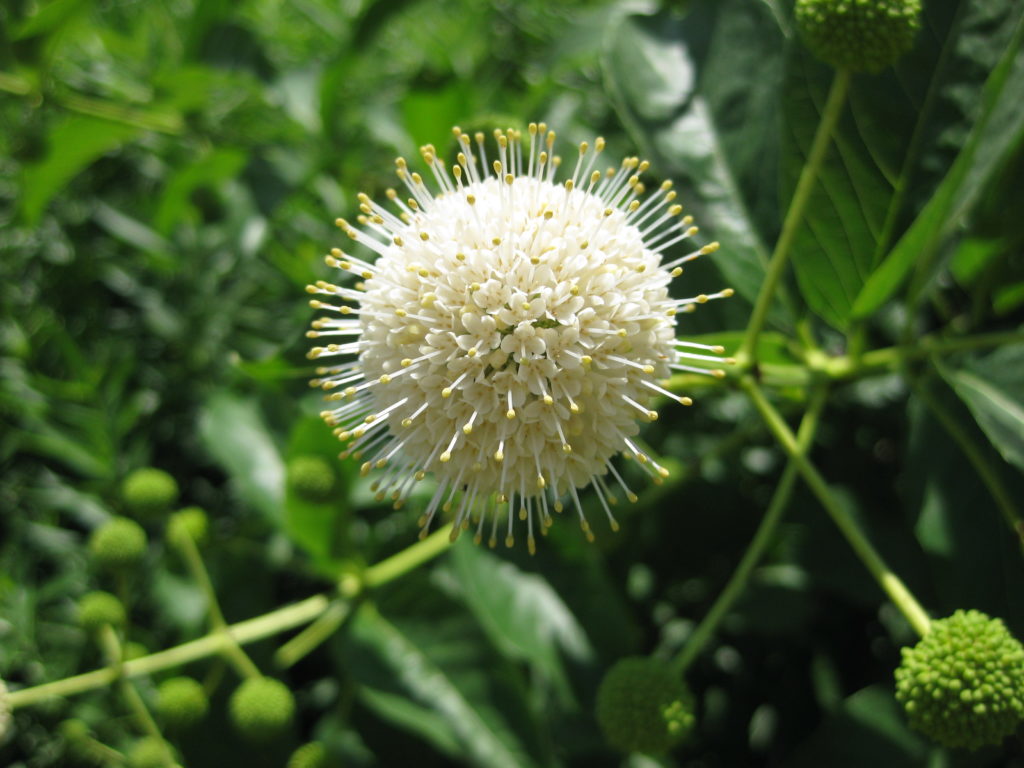
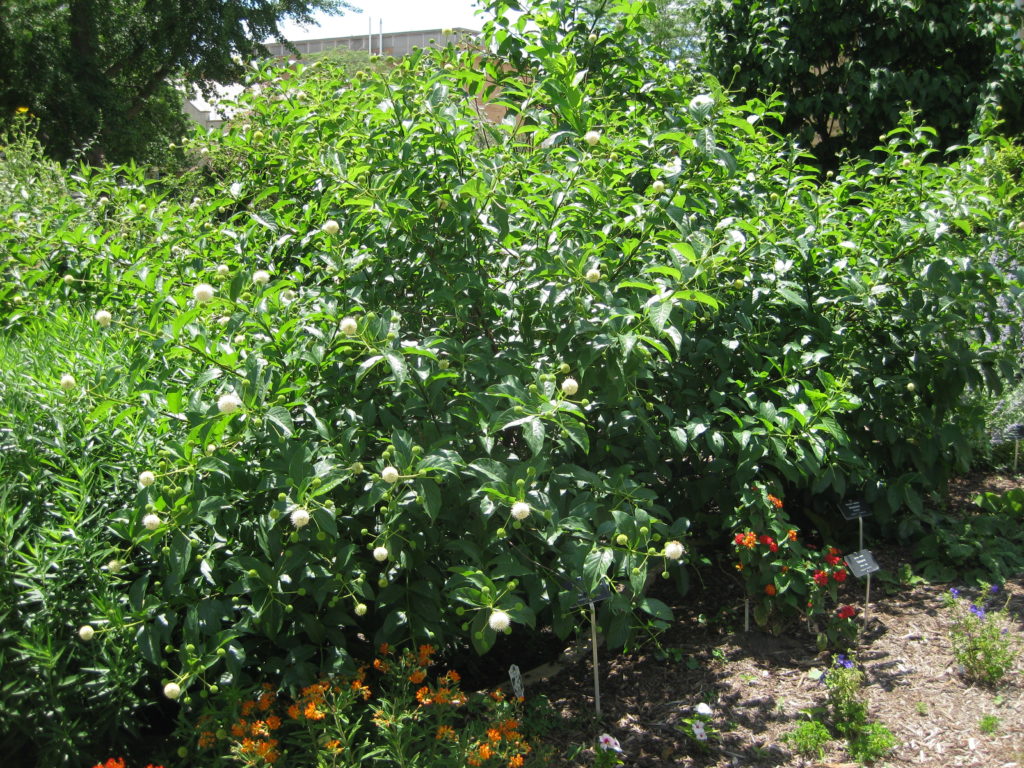
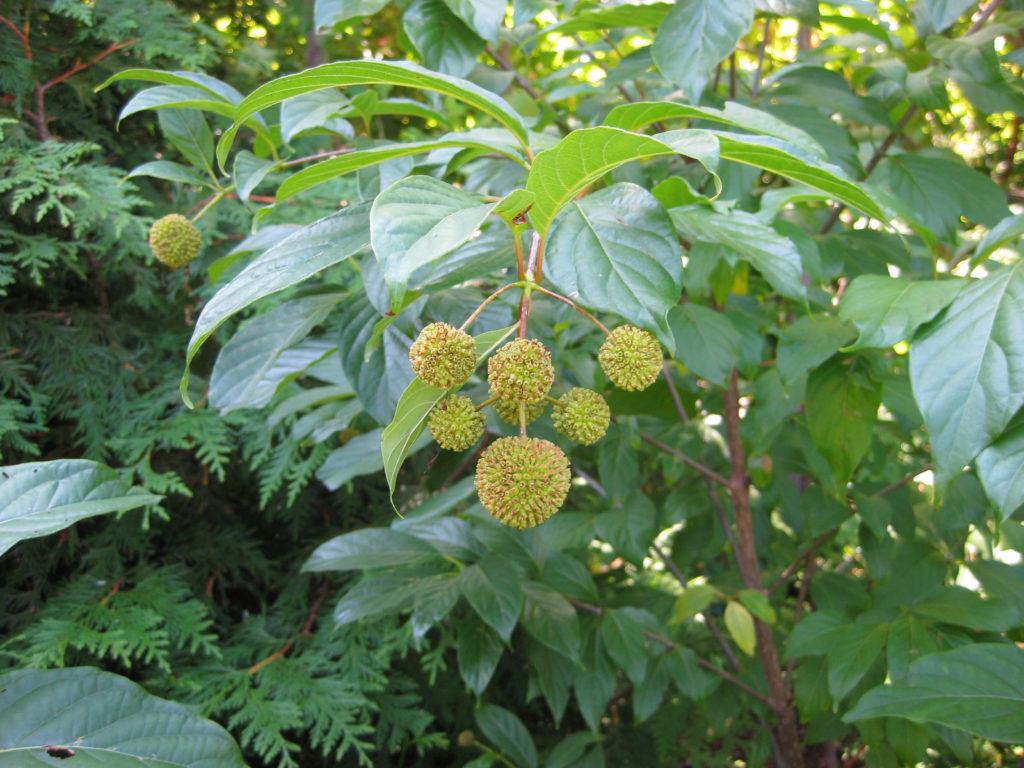
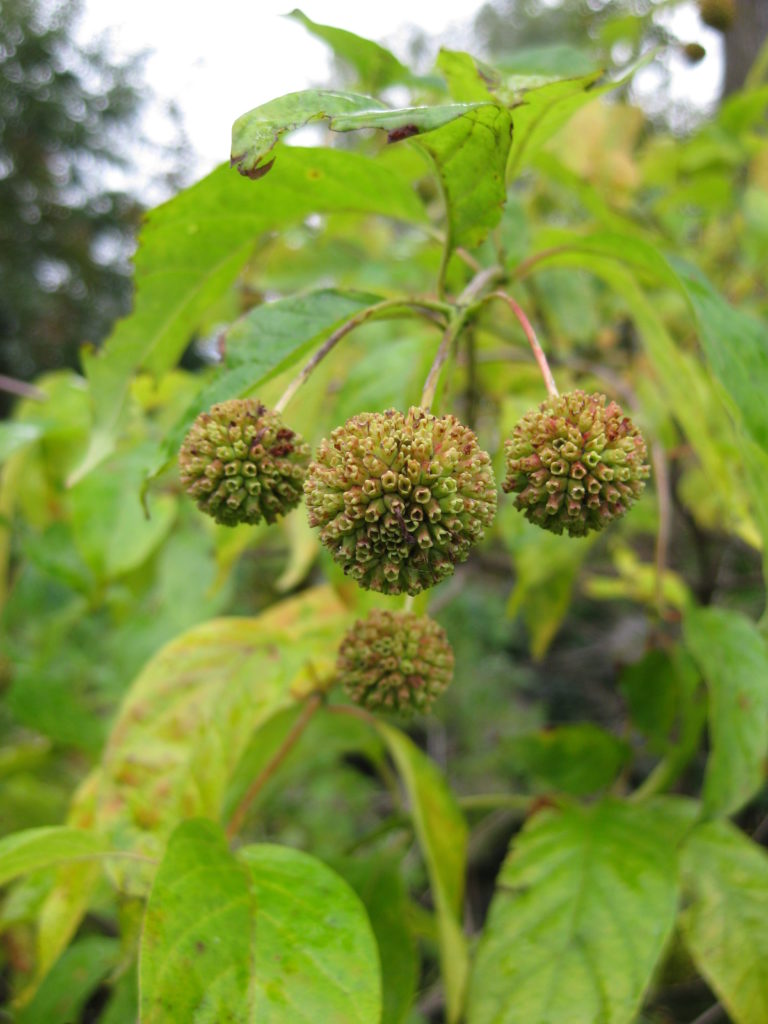
even the fruiting structures late in summer and early fall are interesting and nibbled by area wildlife
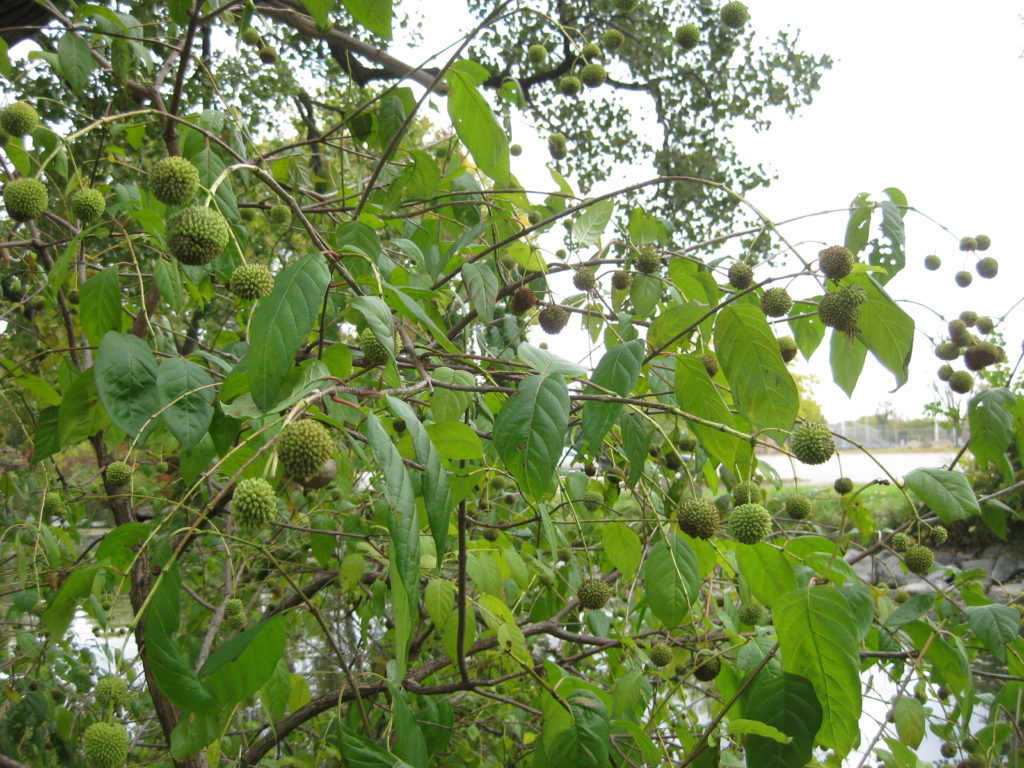
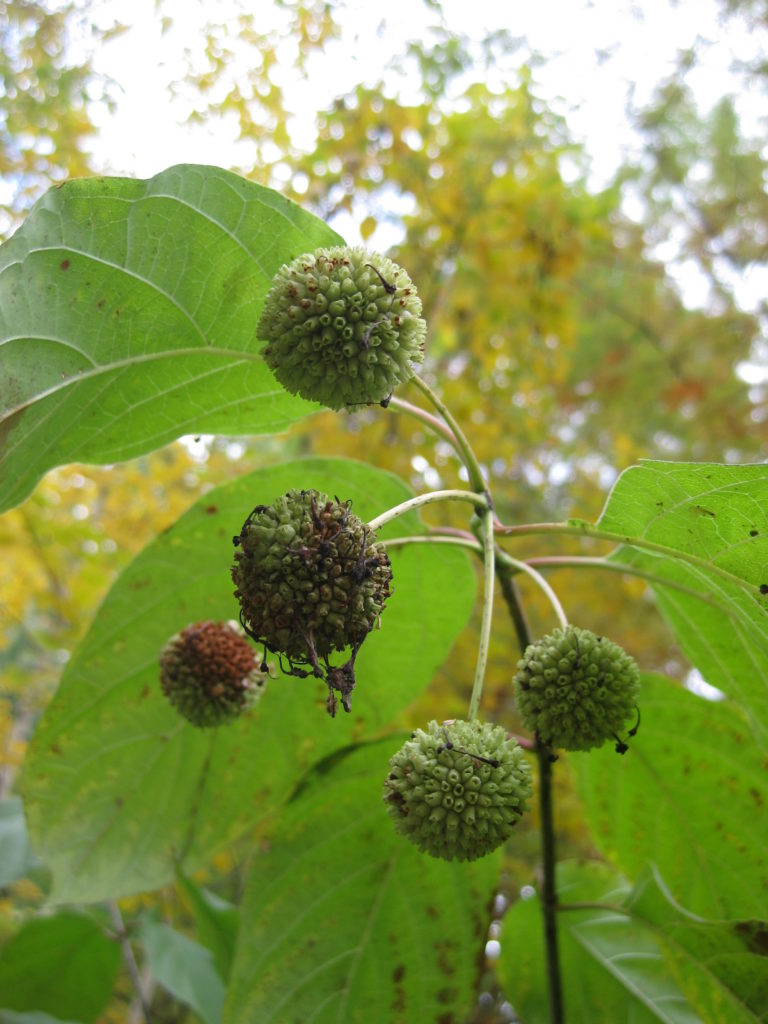
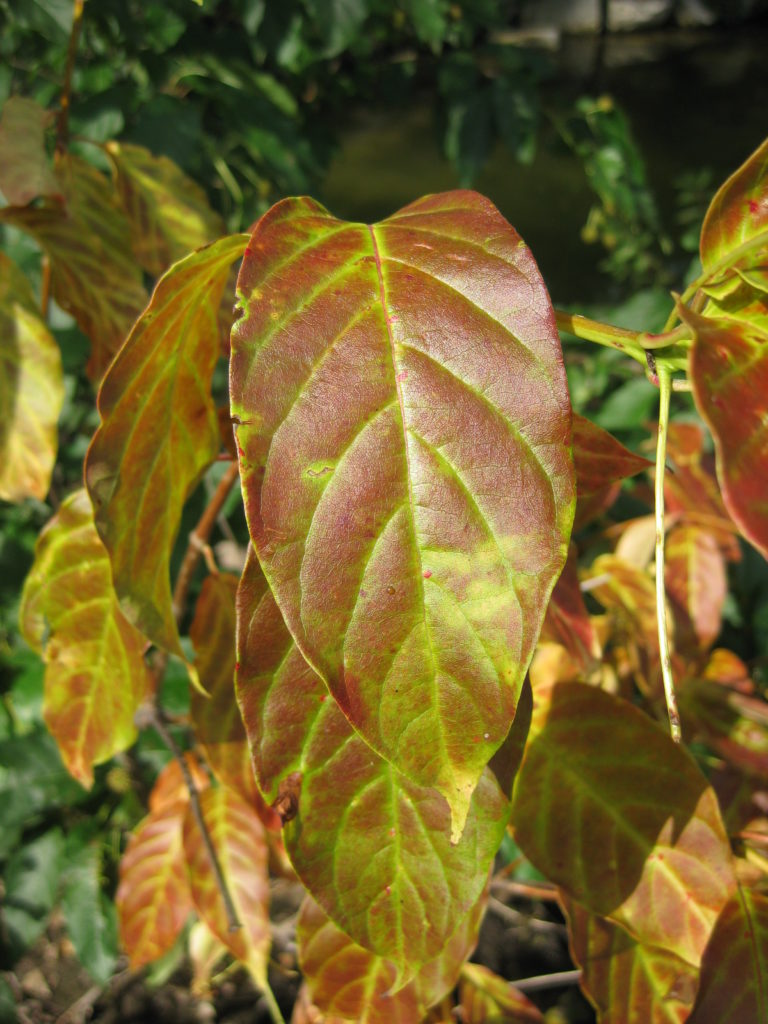
the fall color on buttonbush can be a nice orange-bronze or gold depending on the year…
